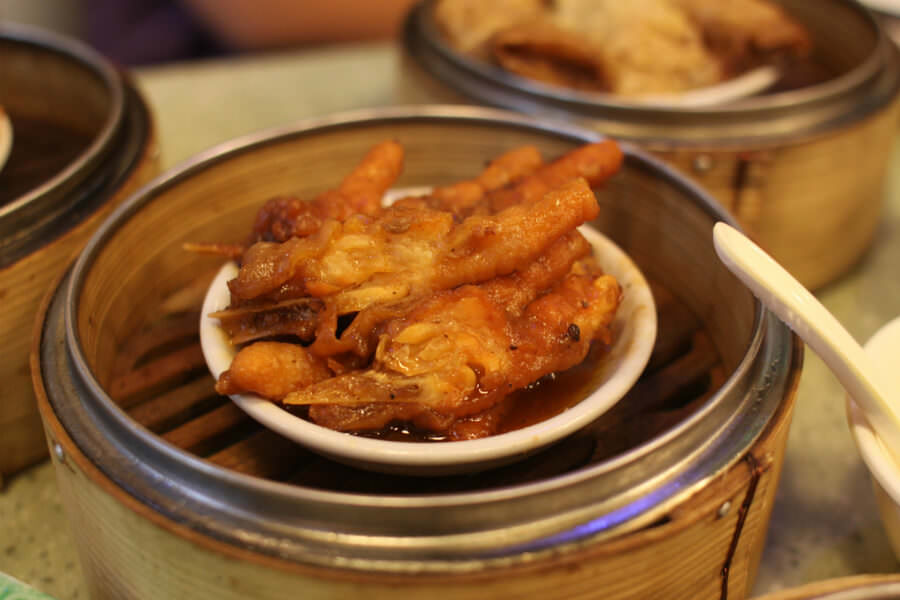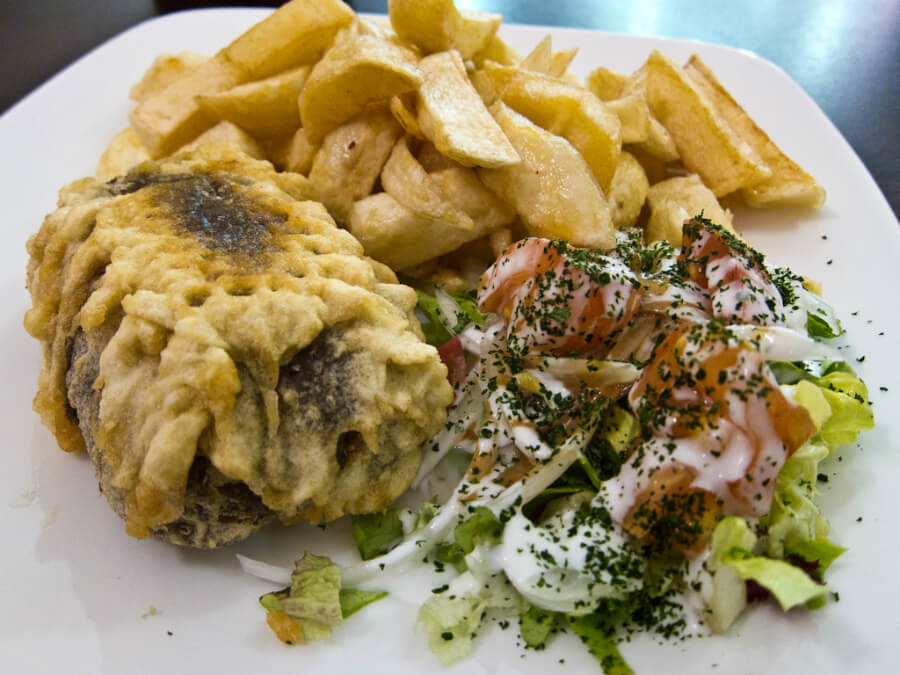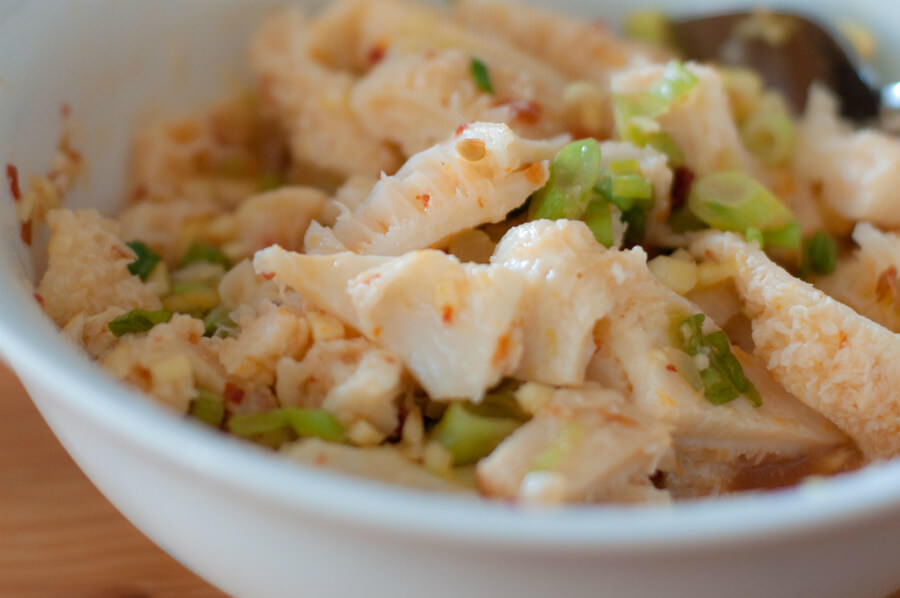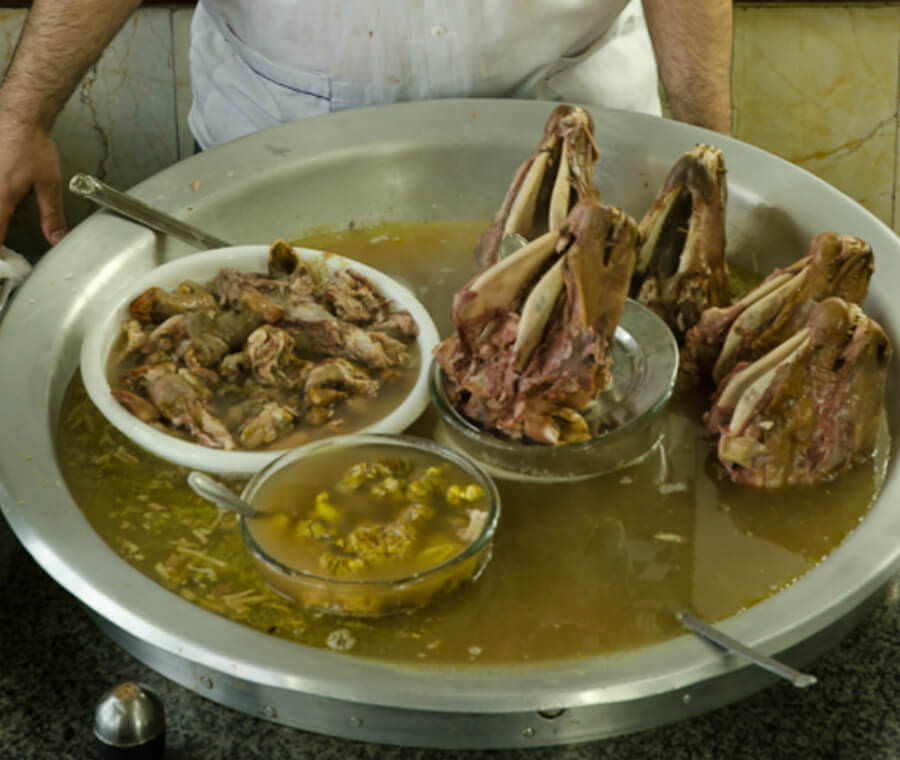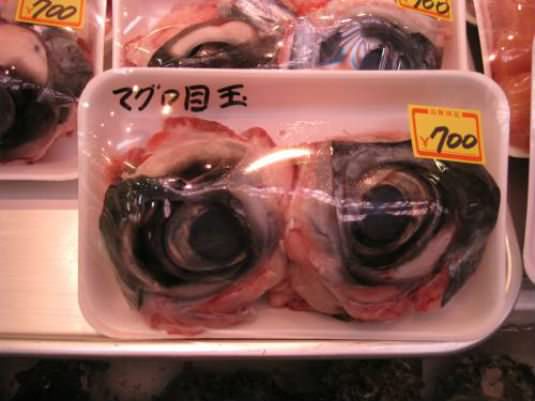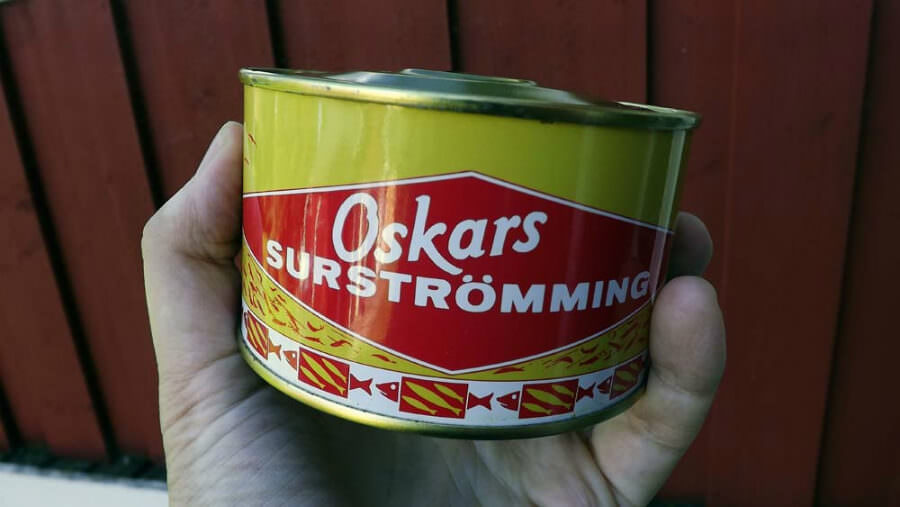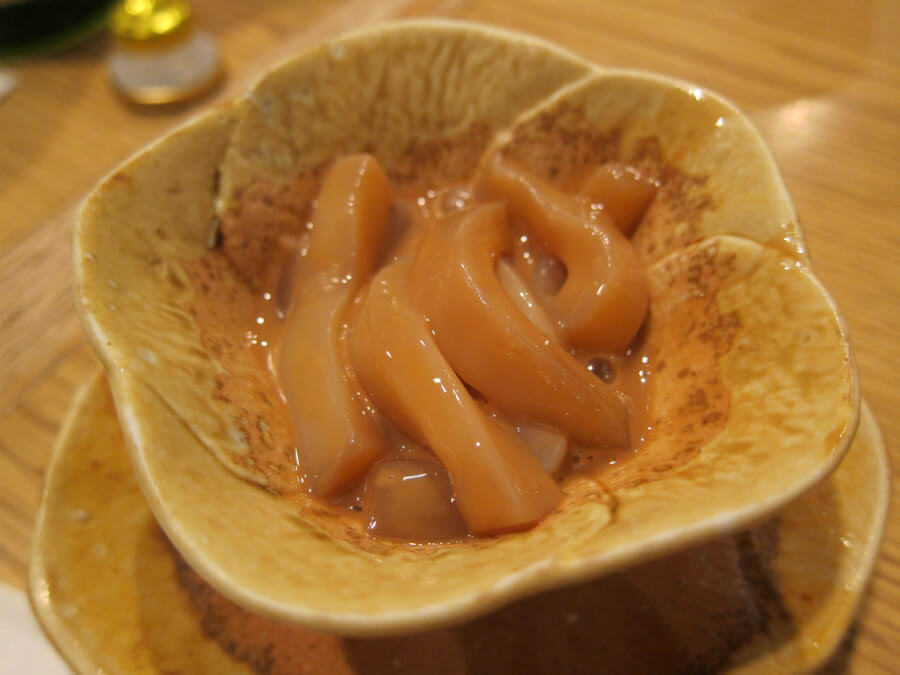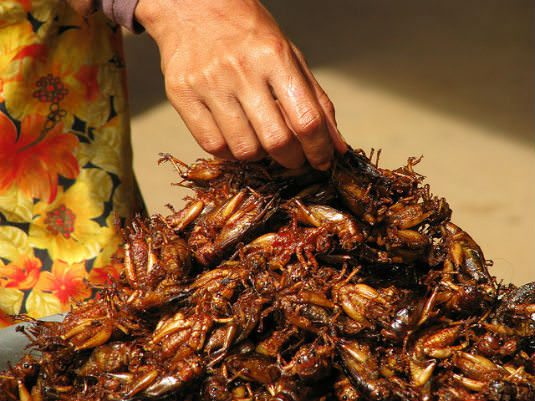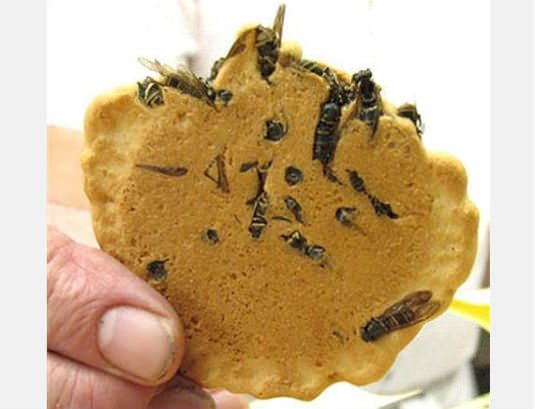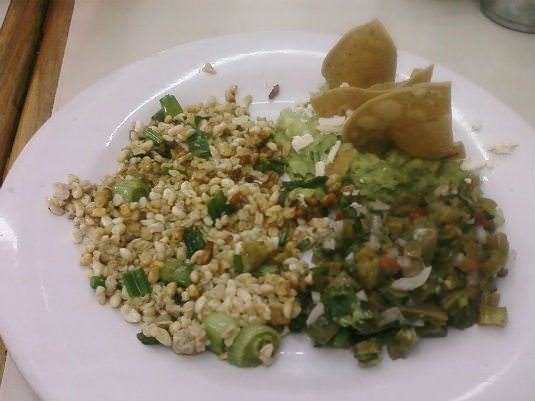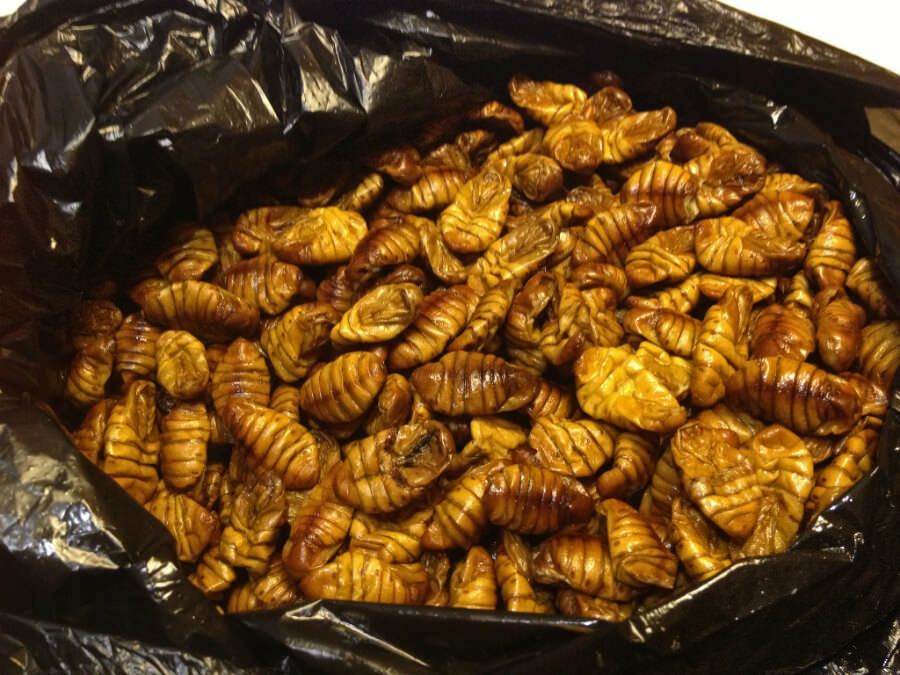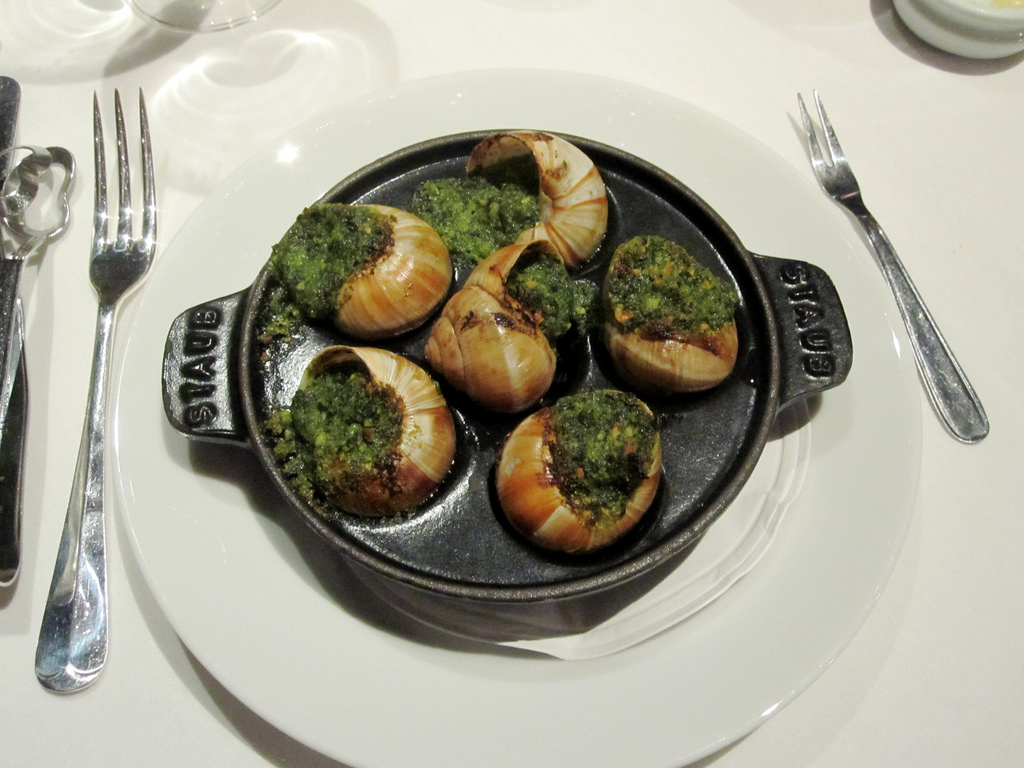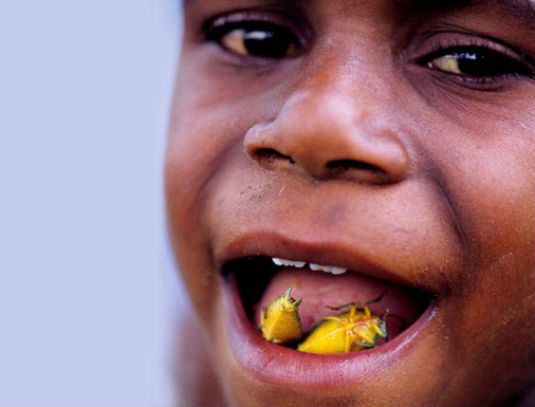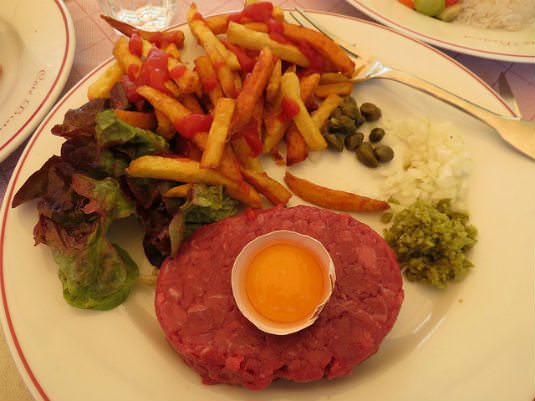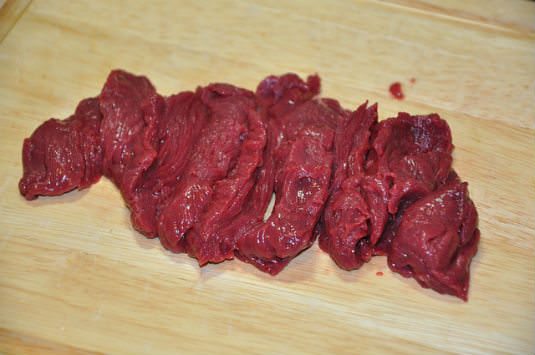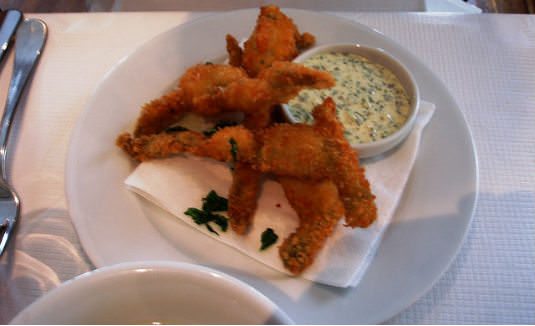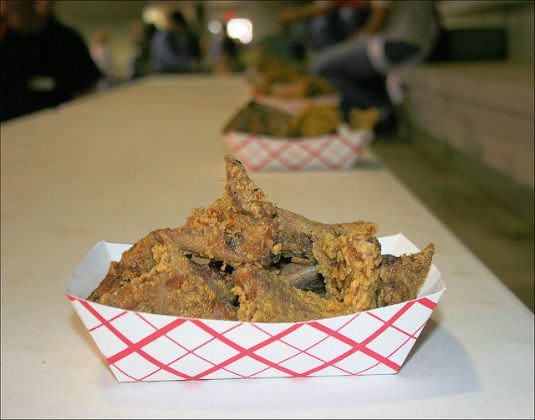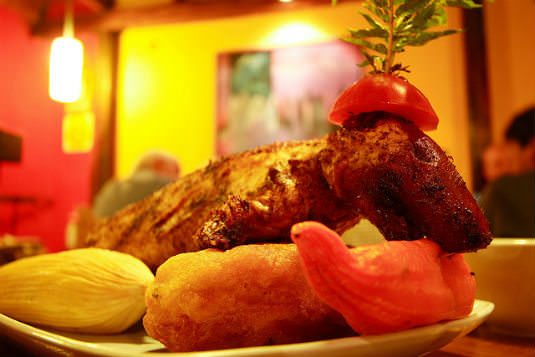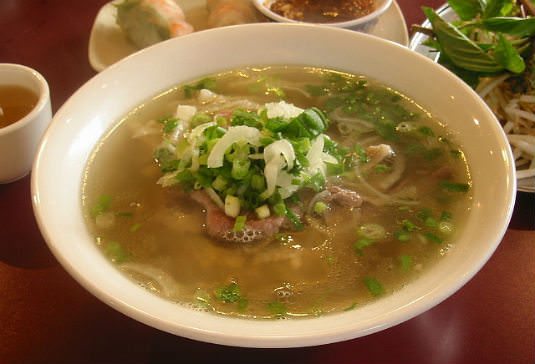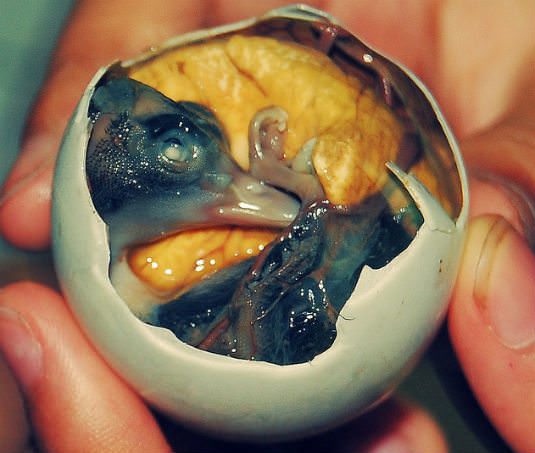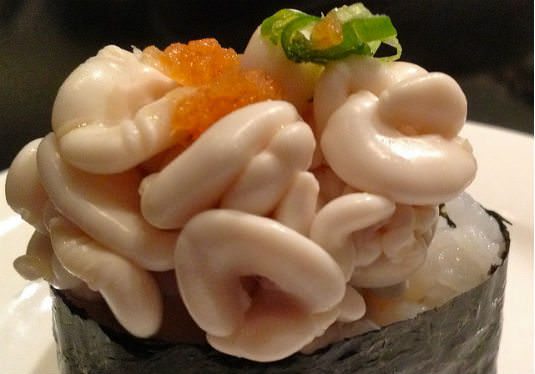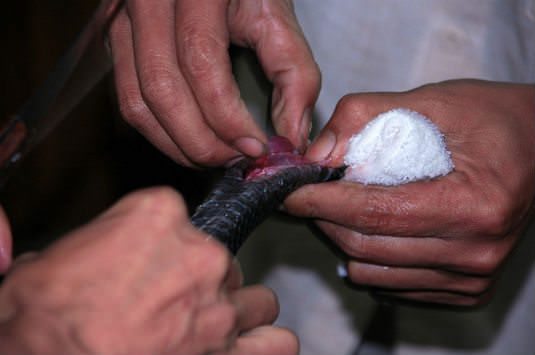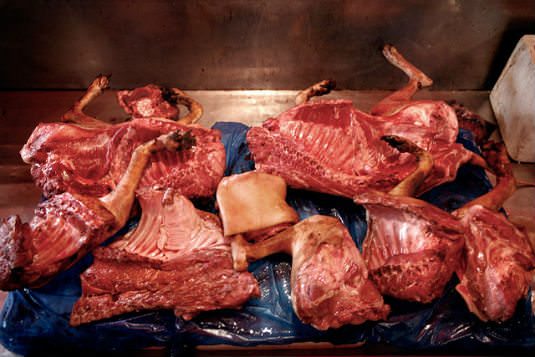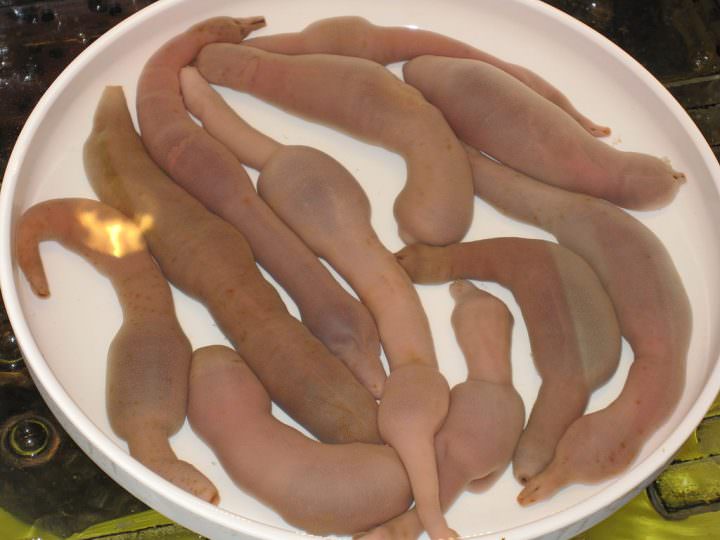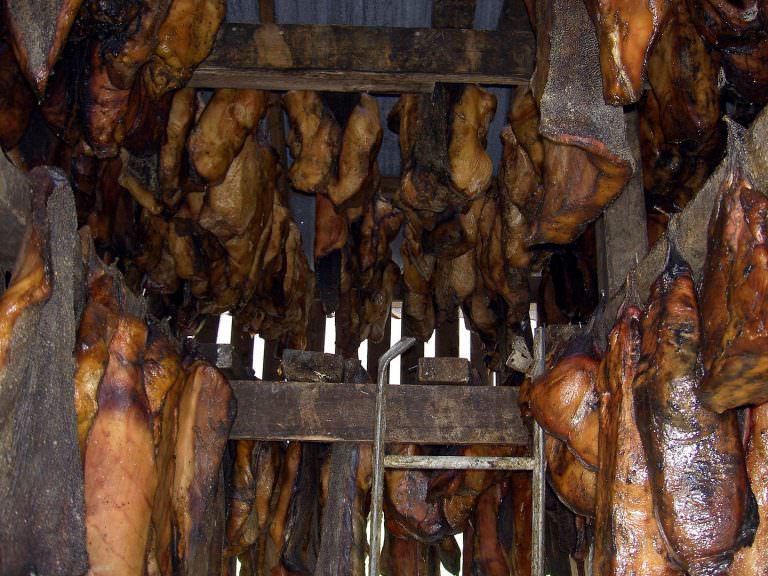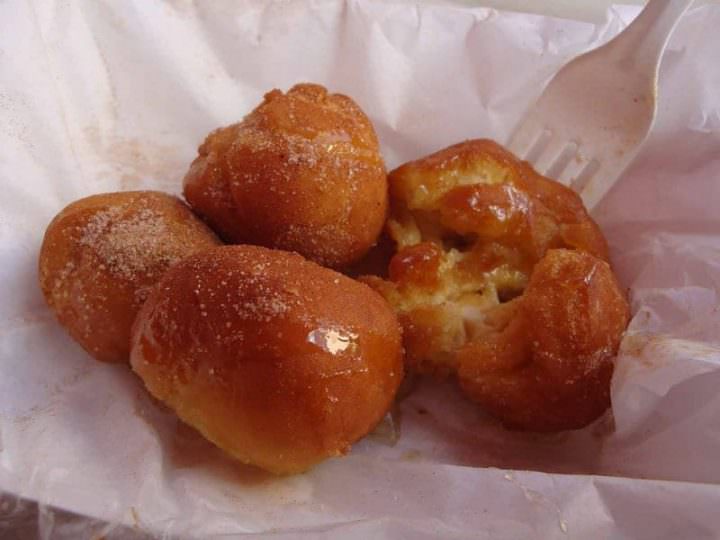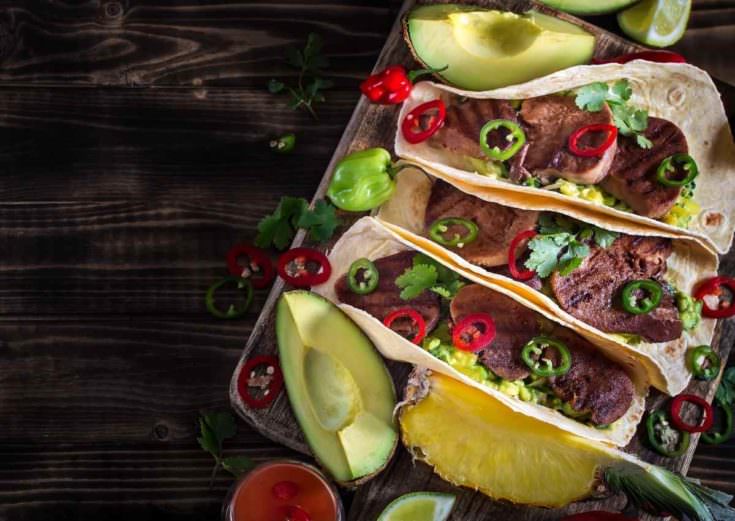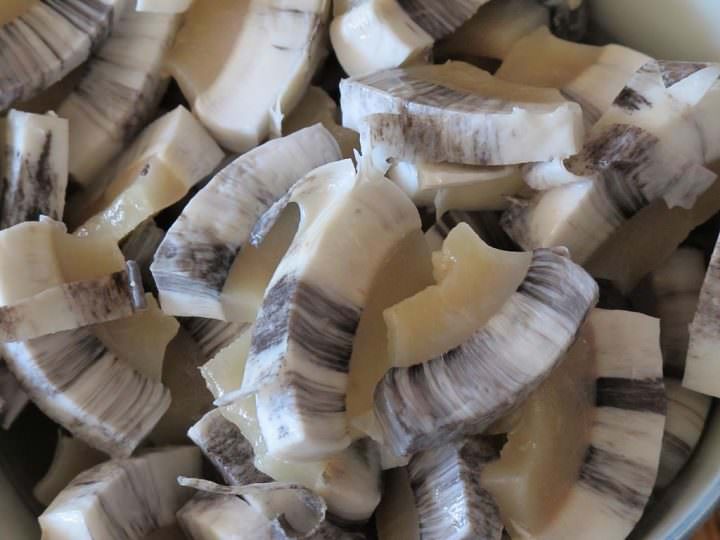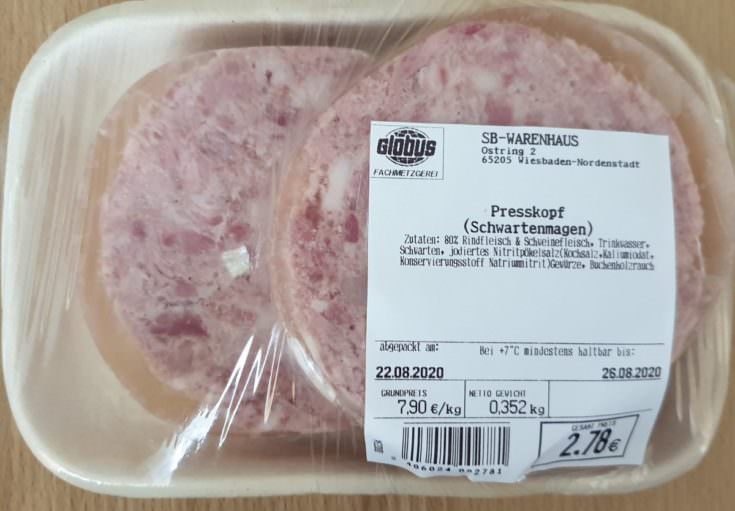Almost everyone dreams of traveling around the world, visiting new places, tasting new dishes, and meeting new people. A trip and eating out are always fun, and introducing new tastes to your taste buds and stomach is always exciting. Every country and every community have their own cultural and unique food habits. Foods that seem weird to us can be considered delicacies in other countries. Our taste buds tend to respond better to culturally or geographically similar foods to our own. Swedish people tend to identify and relate better to French people than Peruvian ones, thus describing French food as less disgusting than Thai food. Very few people are adventurous enough to try these strange foods. It may be beneficial to do some research and become familiar with the food and food items of the country. This will enable you to find the food that you will enjoy.
It may not be to everyone’s taste, but the following list of weird foods are considered delicacies in their countries despite being bizarre or even dangerous to outsiders. We might think these foods are ‘extreme dining,’ but in fact, they’re delicious meals that some people eat every day or on special occasions. From fat-bottomed ants to birds’ nest soup, these dishes provide a fascinating glimpse into cultures worldwide. Of course, it is not a completely objective ranking and should not be taken as such. There are also some dishes listed below that are considered frightening according to the people living in the cultures they came from. However, before we proceed, perhaps it is best to ask yourself how much you want to know about these bizarre dishes, as well as how strong your stomach is.
#1 Hákarl – Iceland
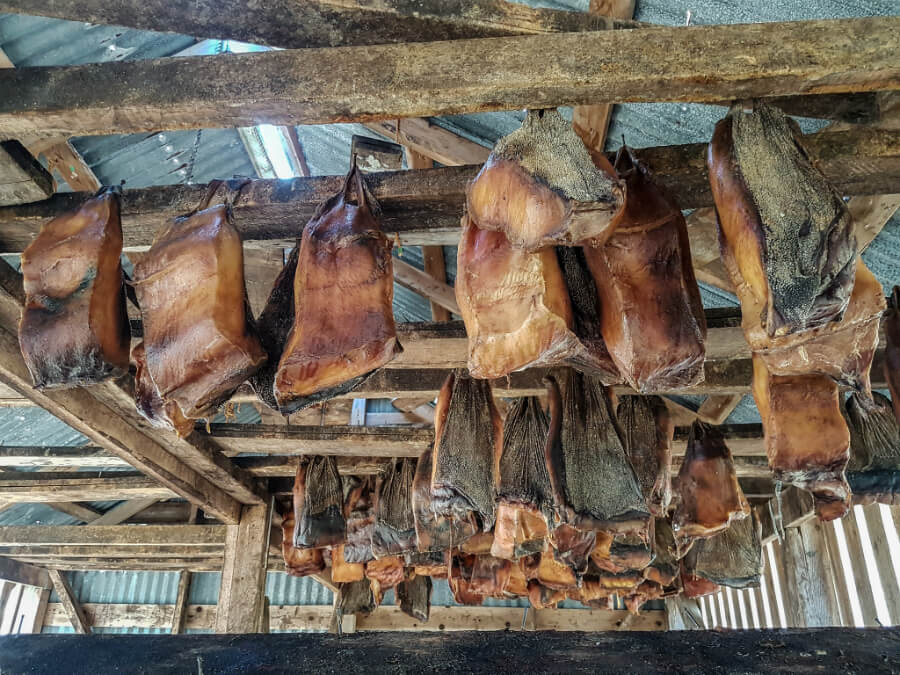
A rotting carcass of a Greenland or basking shark (Somniosidae). Underground, it is buried in a shallow pit and pressed with stones so that the poisonous fluids that allow it to live in such cold water can drain out, making the meat safe to eat. It is then hung to dry before being cut into strips and served. A strong fishy smell and taste, it was described by Anthony Bourdain as "the single worst, most disgusting, and terrible tasting thing" he had ever tried.
#2 Chicken’s Feet – East Asia, Caribbean, South America, and South Africa
#3 Haggis – Scotland
#4 Tripe – All Over the World
#5 Khash – Middle East, East Europe, and Turkey
#6 Tuna Eyeballs – Japan
#7 Black Pudding (Blood Sausage) – Africa, Americas, Asia, Europe
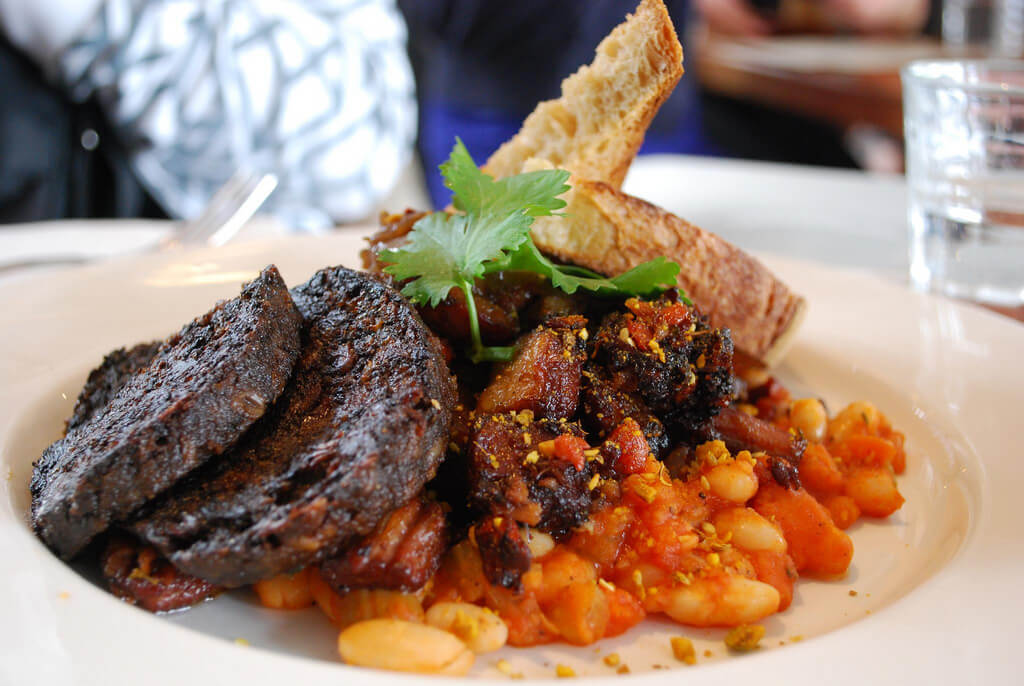
Generally available. There are still a large number of people who find the idea revolting. These are silly people since the final product is delicious. It's congealed blood cooked with various natural flavorings, thickening agents like suet and breadcrumbs, and stuffed into a sausage skin.
#8 Spam – United States
#9 Surstromming – Sweden
#10 Century Egg / 100-Year-Old Egg / 1000 Year Old Egg
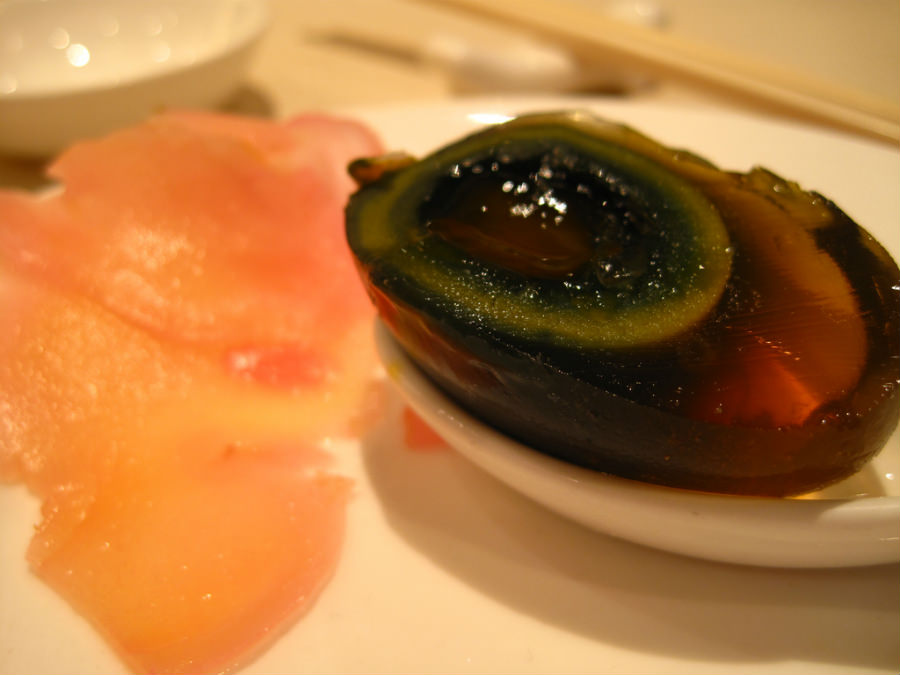
It's not a century or a millennium old, but this egg is pretty rotten. For a few months, the yolk of the egg is preserved in a mixture of clay, ash, and quicklime, while the white turns a dark brown translucent jelly. It seems to smell strongly of sulfur and ammonia but tastes like a hardboiled egg... until you breathe it out, of course.
#11 Shiokara – Japan
#12 Jing Leed (Grasshoppers) – Thailand
#13 Wasp Crackers – Japan
#14 Fried Spider – Cambodia
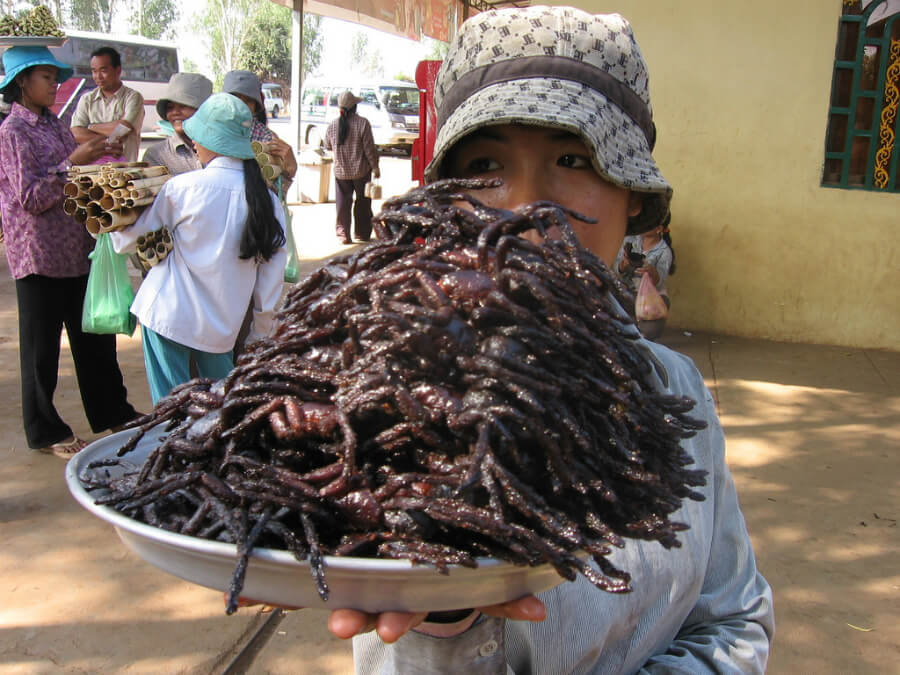
In the Cambodian town of Skuon, the spider is a regional delicacy prepared by marinating it in MSG, sugar, and salt and then frying it in garlic. It is meatier than a grasshopper and contains brown sludge in its abdomen, which consists mainly of innards, eggs, and excrement.
#15 Witchetty Grub – Australia

Another staple of Indigenous Australians in the desert, bushmeat, is a member of the Australian 'bushmeat' family. They can either be eaten raw when they taste like almonds, or they can be lightly cooked when their skin crisps like roast chicken, and they take on the look and consistency of scrambled eggs.
#16 Escamol – Mexico
#17 Beondegi – South Korea
#18 Escargots à la Bourguignonne – France
#19 Sago Delight – Southeast Asia
#20 Stink Bugs – Africa
#21 Mopane Worms – Southern Africa

It is said to be a big, fat, juicy worm full of meat. Even though traditionally dried or smoked for preservation, they are usually re-hydrated and flavored with tomato or chili sauce. According to an American couple who tried it on the Food Network, it tastes like honey barbecued chicken.
#22 Tequila Worm – Mexico
#23 Marmite (or Vegemite) – U.K., New Zealand & Australia
#24 Pickled Egg – U.K.
#25 Bird’s Nest Soup – Southeast Asia
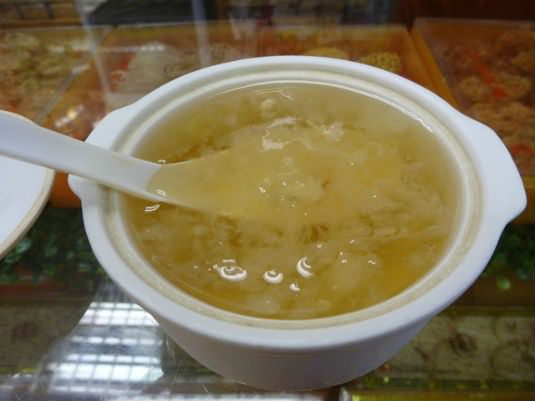
It is made from the swiftlet bird's nest, which instead of collecting twigs for its nest, builds it from gummy saliva, which hardens when exposed to air. They are usually built high up on cliff faces, making harvesting them a dangerous endeavor and resulting in many deaths every year.
#26 Fugu – Japan
#27 Steak Tartare – France
#28 Cherry Blossom Meat – Japan
#29 Frog Legs – France, Southeast Asia, and other
#30 Kangaroo – Australia
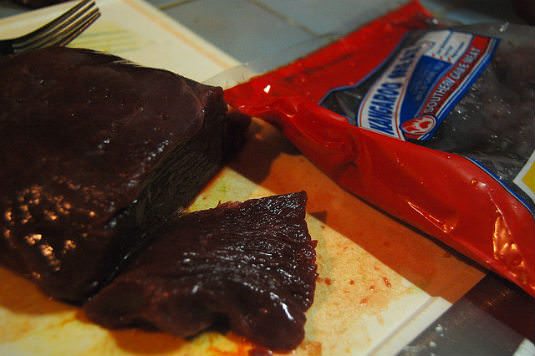
The traditional staple meat of indigenous Australians, kangaroo, is high in protein and low in fat, which makes it a pretty healthy choice. In addition to a simple steak, it can be made into sausages or burgers. Even though some animal groups oppose hunting and harvesting kangaroos, many ecologists believe that farming native animals would be much better for the fragile Australian rangelands than raising cattle and significantly reducing greenhouse emissions.
#31 Crocodile – Australia, Southeast Asia, and Africa

In many places around the world, crocodile meat is a delicacy, supposedly tasting like a cross between chicken and crab. Although crocodiles are protected in many parts of the world, crocodile meat is typically farmed, so it is sustainable, albeit not particularly kind or natural.
#32 Southern Fried Rattlesnake – United States
#33 Guinea Pig – South America
#34 Turtle Soup – China, Singapore, and United States
#35 Starfish – China
#36 Rocky Mountain Oysters – United States
#37 Balut – Philippines
#38 Shirako – Japan
#39 Cobra Heart – Vietnam
#40 Casu Marzu – Italy

This traditional Sardinian dish is also known as 'maggot cheese' because it is made from sheep's milk and contains live insect larvae. It seems these little wiggling larvae are supposed to enhance the flavor, but they tend to jump when they panic, so watch your eyes. Some people suffocate them or kill them in the fridge before consuming them. Others go for the live version. They are capable of surviving the stomach and burrowing into your intestines.
#41 Shark Fin Soup – China
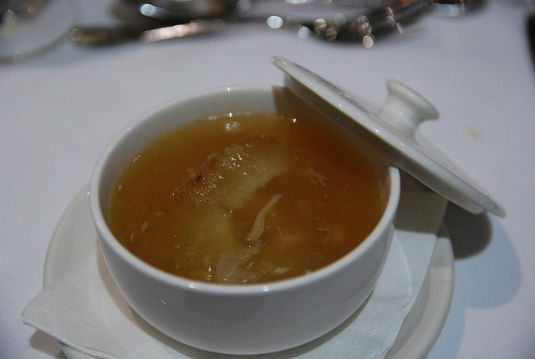
Although fins are considered a delicacy in this part of the world, the brutal way they have harvested means that no one should support the industry. Fins are hacked off of living sharks and thrown back into the sea, so it's not worth it to eat the dried and congealed strands in chicken broth.
#42 Bushmeat – Africa
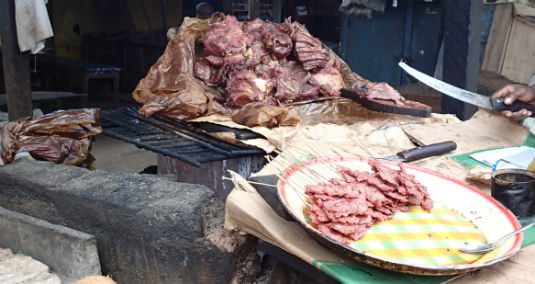
It includes animals from the African plains, such as giraffes, lemurs, and even apes. An ape's DNA is so similar to a human's that it's almost on the verge of cannibalism. Bushmeat isn't just bad for conservation efforts; it also spreads Ebola and may be part of the cause of the current outbreak.
#43 Whale – Japan, United States, Canada, Greenland, Norway, Iceland
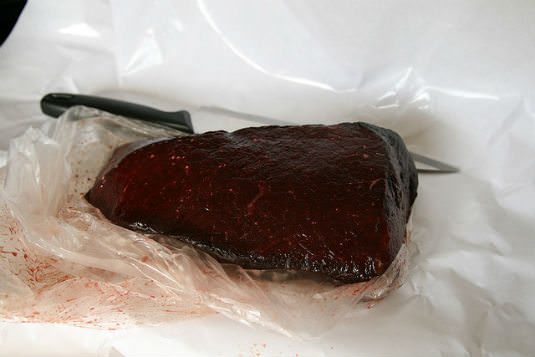
Despite being denounced by countless opponents on the grounds of wildlife conservation and animal rights, whale meat is still consumed by many countries. The deaths of these endangered creatures are rarely swift and usually bloody, but they still occur worldwide. After death, they get what's coming to them. Mercury and other toxins in the meat cause organ failure and mental illness. Mercury poisoning was an occupational hazard for hatters during the 19th century and inspired the Mad Hatter character in the Alice in Wonderland stories.
#44 Dog – Korea, China, and Vietnam
#45 Kiviak (Greenland)
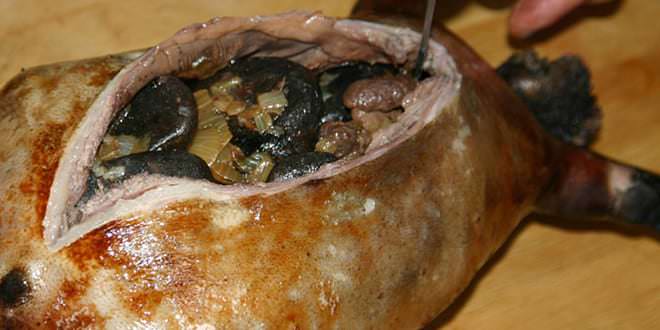
That's right! These cuddly-looking little auk birds are killed by the hundreds and stuffed into dead seals to make Kiviak. The seal is then completely airtight, covered in oil to repel flies and maggots, and fermented for three months. Intense, toxic-smelling bird meat tastes somewhat like very mature cheeses or licorice. During the winter months, when it is harder to catch food, especially for special occasions such as Christmas and birthdays, this dish is often eaten.
#46 Penis Fish (South Korea)
#47 Hakarl (Iceland)
#48 Snake soup (China)
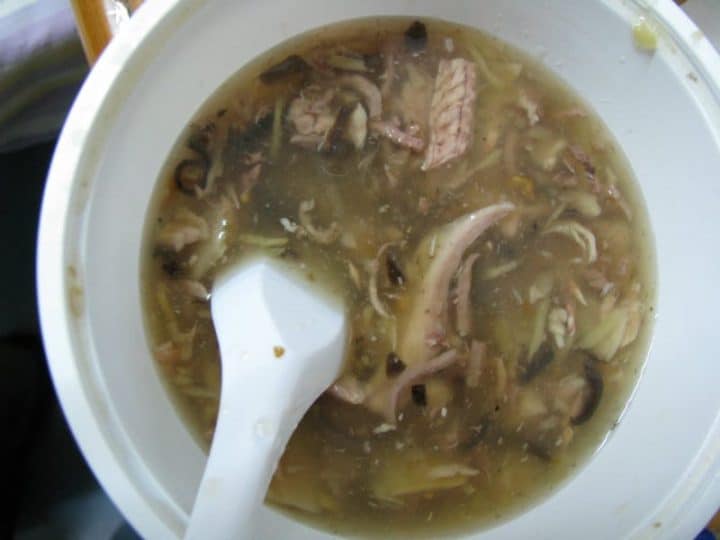
Snake soup is a 2,000year-old delicacy popular mainly in China and other parts of Asia. There are a variety of snakes that can be used, and often a customer chooses which snake they want. However, the most popular snakes eaten are pythons and water snakes. In addition to being healthy and full of medicinal benefits, it is cooked for six hours.
#49 Sheeps Head Smalahove (Norway)
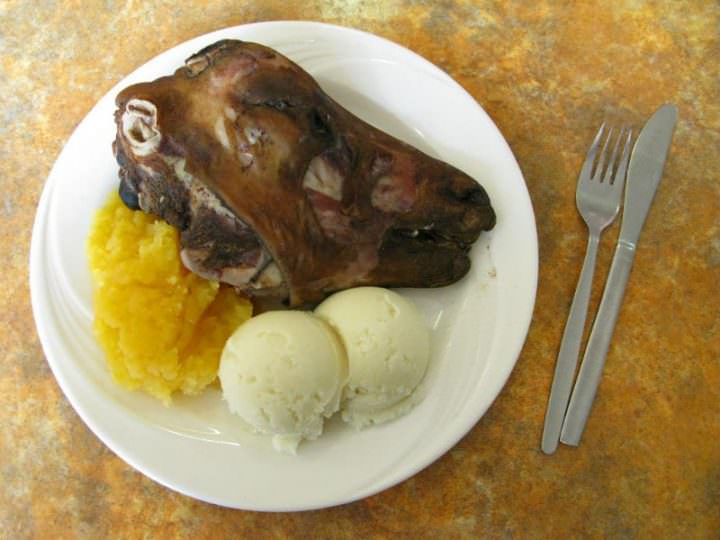
Even though Norwegian food isn't particularly well-known for its weird food, this recipe for sheep's head (Smalahove) wins the prize for being simply ridiculous. Typically eaten on the Sunday before Christmas, smalahove is a traditional recipe. The sheep's head is usually served with rutabaga and potatoes after being prepared and boiled. The cheek is the best part of the sheep's head. The serving is usually half a sheep's head per person, yum!
#50 Surströmming (Sweden)
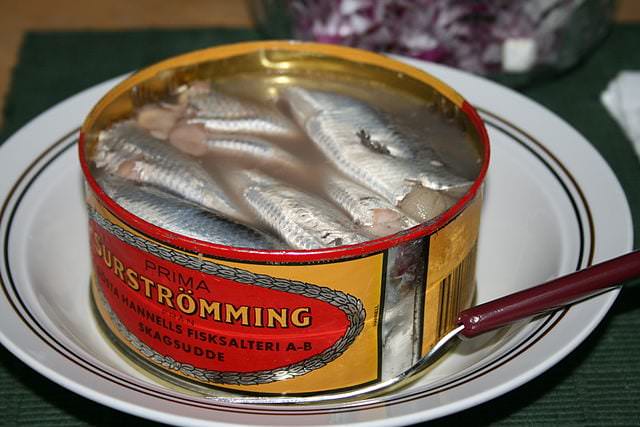
Surströmming is well known as the world's spiciest food, and for very good reason! There is a strong odor emanating from this disgustingly stinky fermented fish prohibited on planes! Swedes usually eat Surströmming with thin flatbreads and oat pieces of Bread, and it has a sour, sharp, peppery taste with a salty base.
#51 Hormiga Culona: Edible Fat-Bottomed Ants (Colombia)
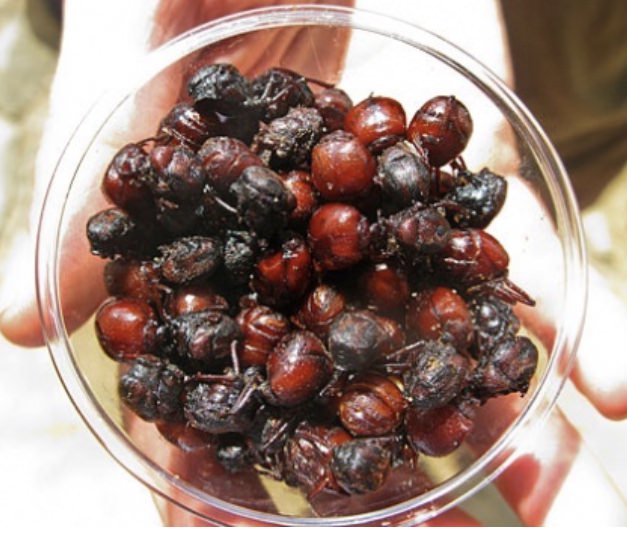
Hormiga Culona (fat-bottomed ants) is a popular delicacy in Colombia, where they are either roasted or fried and eaten like peanuts. Hormiga Culona is packed with health benefits and is considered aphrodisiacs and a great source of protein. People love their smokey flavor and crunchy texture.
#52 Tamilok Woodworm (Philippines)

Tamilok Woodworm is a Filipino delicacy found in decaying, rotten logs found in swampy areas such as mangrove swamps. Once the wood has been cracked open, the slimy creatures are extracted. As you crack open the log, you will see the tamilok clams wiggling through the wood, making holes as they go. It has a fishy, slimy texture and an off-putting smell with oysters.
#53 Cow’s Intestines Tripas Tacos (Mexico)
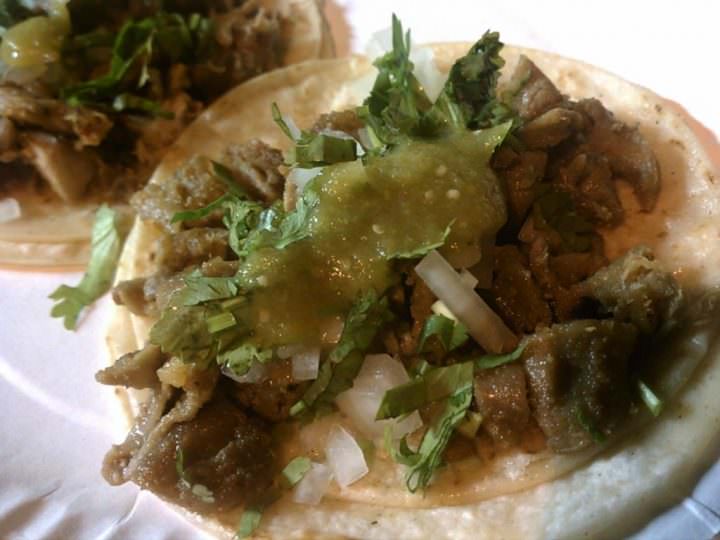
The eating of tripe is not uncommon since many countries worldwide do so, but Mexico and Portugal are two of the countries that continue to eat it regularly. And the Mexicans eat it in tacos! Delicious cow's stomachs can be cooked and then eaten with a tasty taco sauce of fish sauce, jalapenos, and lime juice.
#54 Deep-fried butter balls (USA)
#55 Goats intestines – Buchada de bode (Brazil)
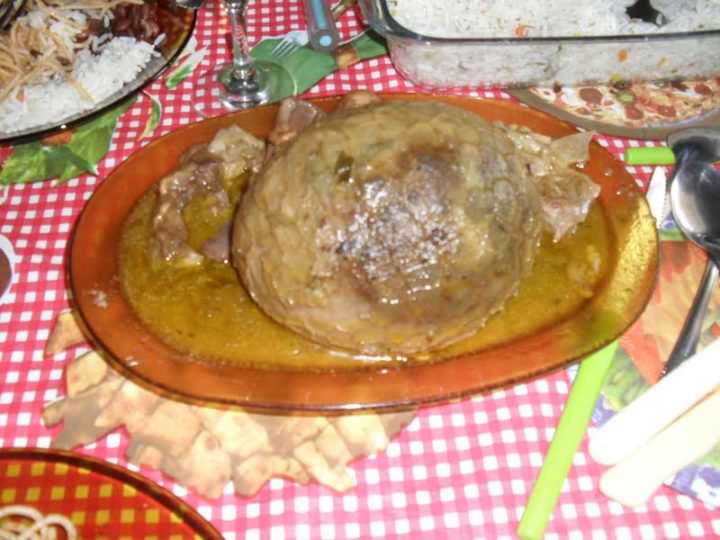
This dish looks disgusting, and that is the worst thing about it. Essentially, bodebuchada is the intestines of a kid goat that is cooked and served in the stomach. However, cooking intestines in the stomach isn't unique to Brazil. Haggis in Scotland is very similar to bachata de bode in that it utilizes the stomach to store and cook ingredients.
#56 Cuy Guinea Pig (Peru)
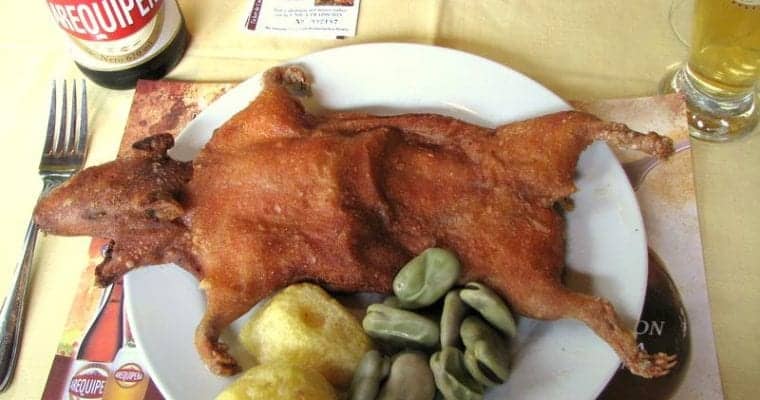
The Cuy plant is hugely popular in Peru, and it is very easy to find. A Guinea pig can be cooked in various ways, like spit-roasting or frying. Colombia and Bolivia are also known to eat it - basically anywhere guinea pigs are considered a pest rather than a pet. The cooked guinea pig is then commonly served with potatoes and vegetables.
#57 Stuffed moose heart (Canada)
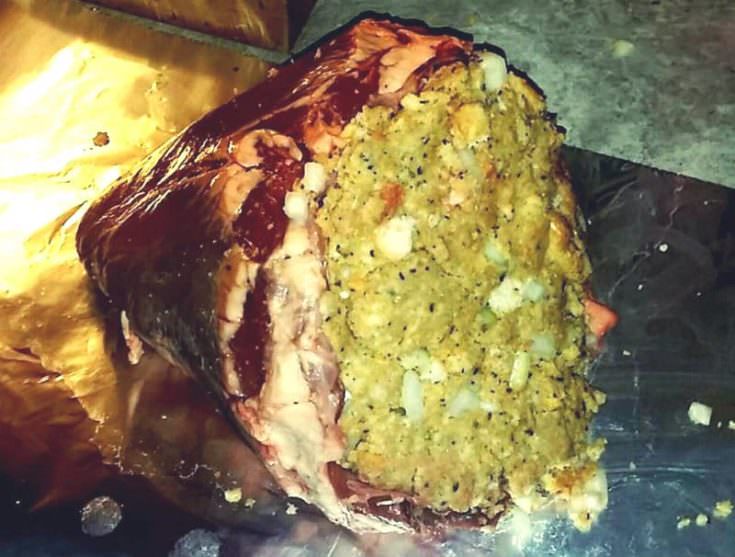
Oh, Canada! The land of the moose, the home of the stuffed moose heart. This dish does something very typical of what we discover on Travel Food Atlas. Using all the organs of an animal instead of just eating the meat is a common trend, such as this Peruvian dish made with cow hearts. The moose heart is not wasted but instead cleaned, trimmed, and stuffed with garlic, celery, onion, sage, and herbs. The heart is then roasted and sliced up.
#58 Fruit Bat Soup (Palau)
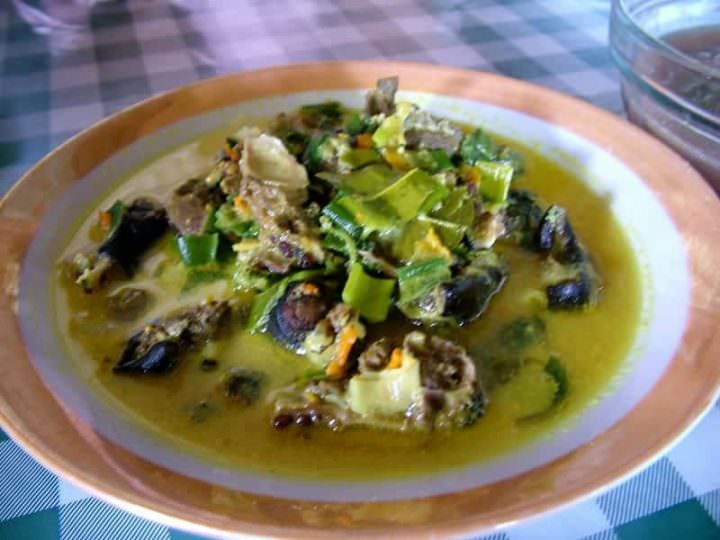
Fruit bat soup is a dish consumed on the Pacific island of Palau, where it was once an integral part of the local diet. It is now considered a delicacy, but it is also a good source of protein and so was a very useful dish. Fruit bats get their name because they eat fruit rather than insects, as most bats do. Fruit bat soup has mixed reviews regarding taste, with some very passionate advocates, whereas others are slightly underwhelmed by it.
#59 Crocodile Skewers (Australia)

Australia is renowned for its crocs, but few people know that croc meat can be used to make a delicious skewer. A similar recipe in the USA with alligator meat, especially in Florida and Louisiana, where alligators are common pests. Reptile meat is usually quite rubbery, but those who cook it often have recipes for marinating the meat to soften it. Often, the skewers are served as kebabs with pita bread and salad after grilling on the barbecue.
#60 Jellied Moose Nose (Canada)
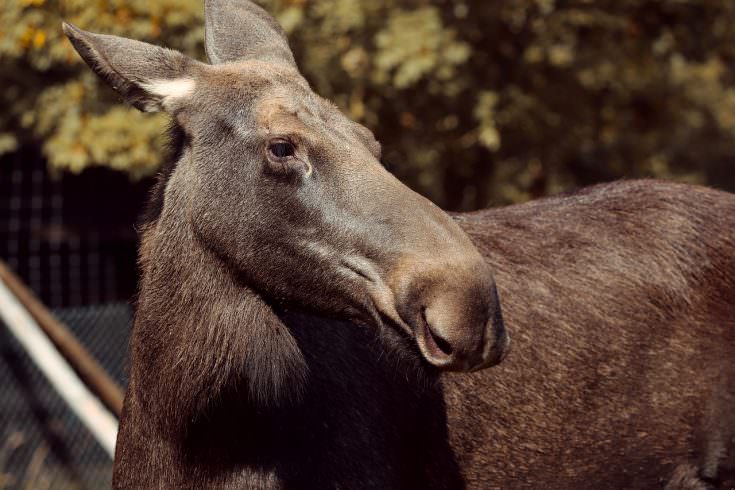
Often, harsh climates produce some unique foods, dishes born out of a desire to make every bite count. This is the case with jellied moose nose, an Alaskan and Canadian specialty that's pretty much exactly what it sounds like. Jellied moose noses are made by removing the fur from the nose. Afterward, the nose is sliced and cooked with aromatics like onions, garlic, and spices. As soon as the meat is cooked, it is placed in a loaf pan and covered in moose broth, then chilled until it becomes a sliceable jelly loaf, similar to head cheese.
#61 Bulls Testicles Criadillas (Argentina)

Isn't that a delicious piece of meat? Probably the grossest part of the animal to eat and one of the strangest dishes in the world, but bull's testicles are not uncommon. Testicles are fried and served with salsa in Argentina, Spain, and Mexico, but you may know them as rocky mountain oysters in the U.S. Credillas are the Latino recipe for cooked bulls' testicles, which is surprisingly not too bad. It might not sound too appetizing, but eating testicles is surprisingly common in countries where bullfighting is popular.
#62 Canned Bread (USA)
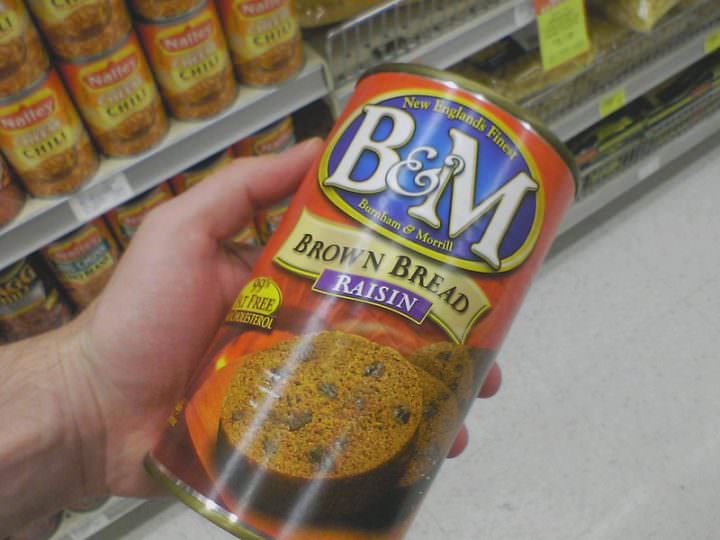
Bread in a can is exactly what it sounds like; it's Bread. When ovens were less common in the 1920s, steaming over an open fire was the easiest to make Bread. Canned Bread is made exactly like this and, even though regular Bread is now cheap and widely available, canned Bread hasn't disappeared. While it might be useful in extreme emergencies, it is very dense and chewy. They are usually eaten with butter, cream cheese, or jam.
#63 Beef Tongue Tacos
#64 LIVE “Dancing Shrimp” Goong Ten (Thailand)
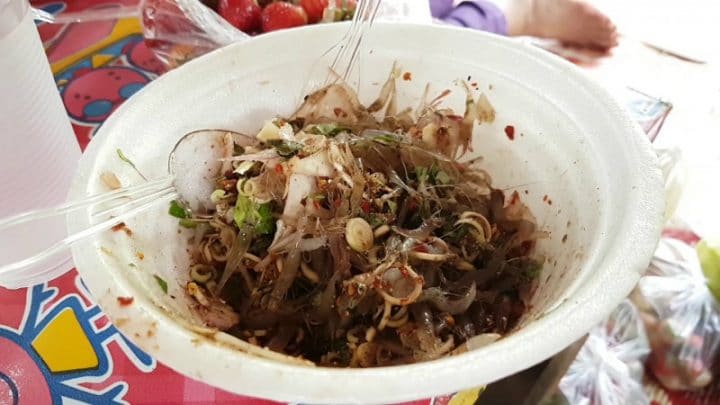
The "dancing shrimp" or "Goong ten" is a delicacy in Northern Thailand where a bowl of live shrimp is doused in sauce and served raw to the customer. The shrimp are calm until they are covered in the sauce, at which point they start jumping around trying to escape, giving the impression that they are dancing. The sauce is delicious, so the taste and smell are not that bad. The fact that you're eating a live animal is one of the strongest sensory experiences you can have.
#65 Muktuk (Greenland & Canada)
#66 Presskopf
#67 Fesikh
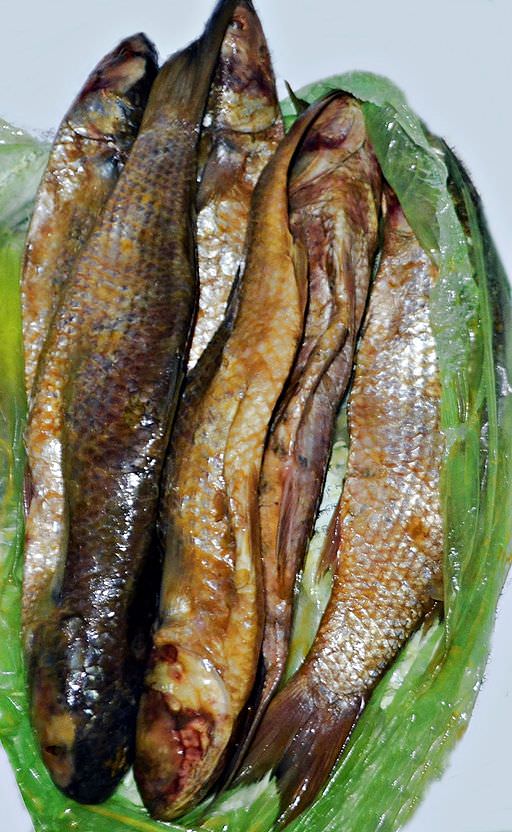
The Egyptian fish delicacy, fesikh, is potentially deadly and smelly. If not prepared correctly, it is deadly, but its pungent smell is outrageous. The fish is preserved in salt for two weeks or more, which is why it smells so good. The fish is then deep-fried and served with Bread and salad. Most actually consider Fesikh to be quite tasty if you can overcome the smell.
#68 Civet coffee
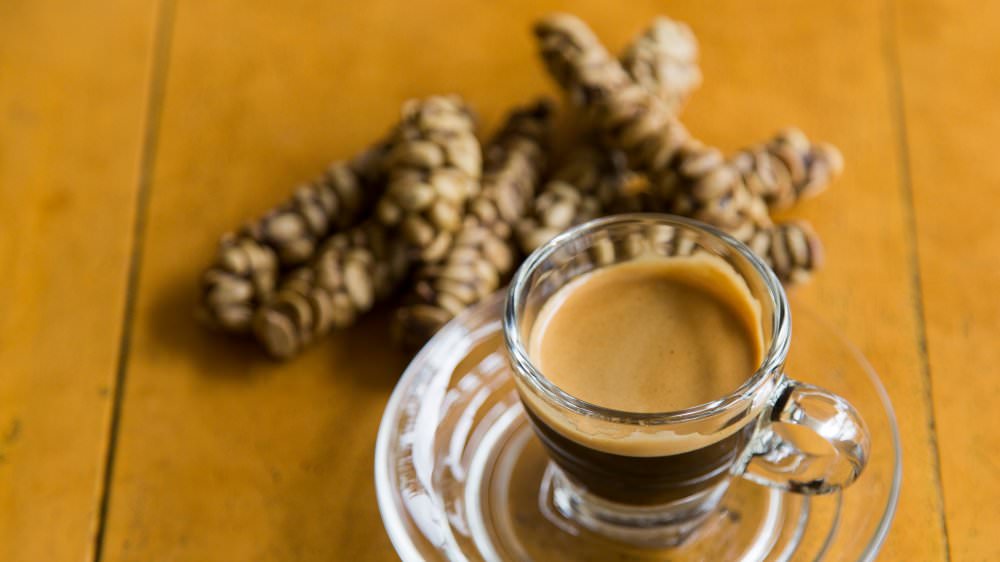
Perhaps you've heard of Kopi Luwak - also known as civet coffee - if you're a fan of expensive and exotic coffees. Civet cats eat coffee cherries, then, well, poop them out. Civet cats eat only the ripest coffee cherries, so their digestive enzymes work on their coffee beans to eventually produce a smoother brew. When the coffee beans are taken from the scat, they are then washed, roasted, ground, and brewed, thus producing coffee that's not only expensive (about $100-$500 for a pound) but seemingly tasty, as the digestive enzymes work on the coffee beans to produce a smoother brew.
Some people are concerned about how humane making civet coffee is. Unlike the more expensive civet coffee made from coffee beans taken from the poop of wild civets, the slightly cheaper stuff is made from civets kept in captivity and forced to eat coffee cherries.
#69 Live octopus sushi
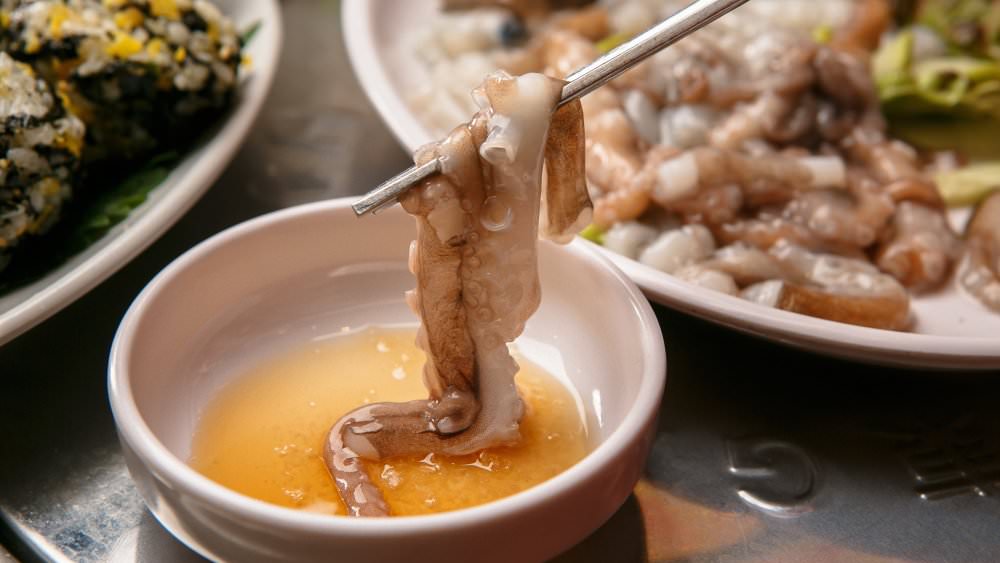
Octopus sushi ranges in quality here in the U.S. Sometimes it's chewy and rubbery; other times, it's tender and buttery. However, if you are looking for a truly transcendent Octopus sushi experience, you should head to Korea, where you can try sannakji. Sannakji means "wriggling octopus," and it's the freshest octopus you can eat. Chefs serve live young octopuses that are still wriggling while cut into pieces. Some people swallow the whole live octopus at once, but if it's your first time, perhaps start with just a wriggling piece or two. Oh, and don't forget to chew — about six people die each year from choking on this delicacy.
#70 Sweetbreads
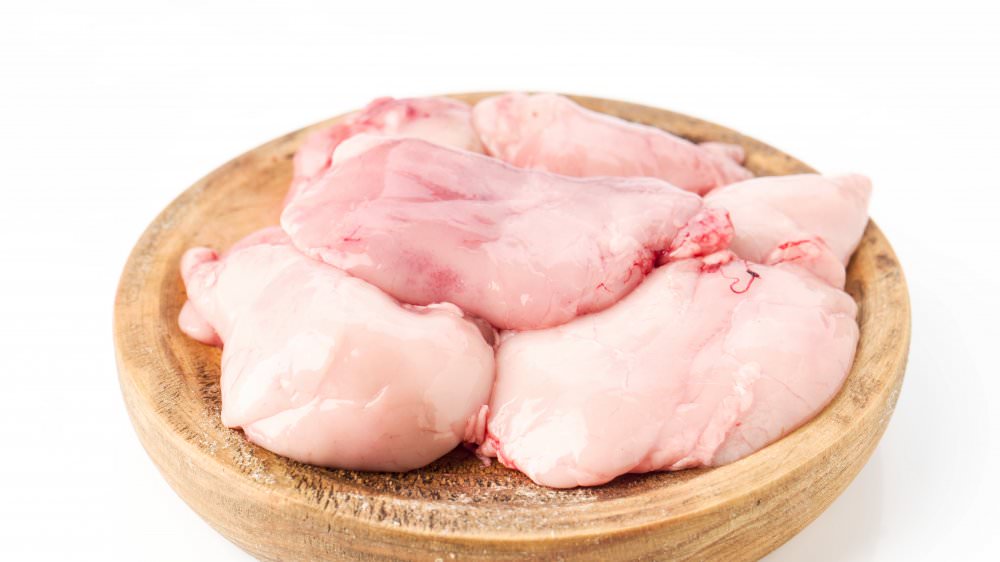
Is there any dish with a more misleading name than sweetbreads? Sweetbreads are not sweet or Bread, but the thymus gland or pancreas of an animal, usually veal or lamb. When cooked properly, sweetbreads have a smooth, creamy texture, and they're often fried to give them a crispy exterior. It's a bit of a project to soak, blanch, and shock the sweetbreads before cooking them, but if you're an adventurous eater who wants to try more offal, they're worth trying.
#71 Miracle berry
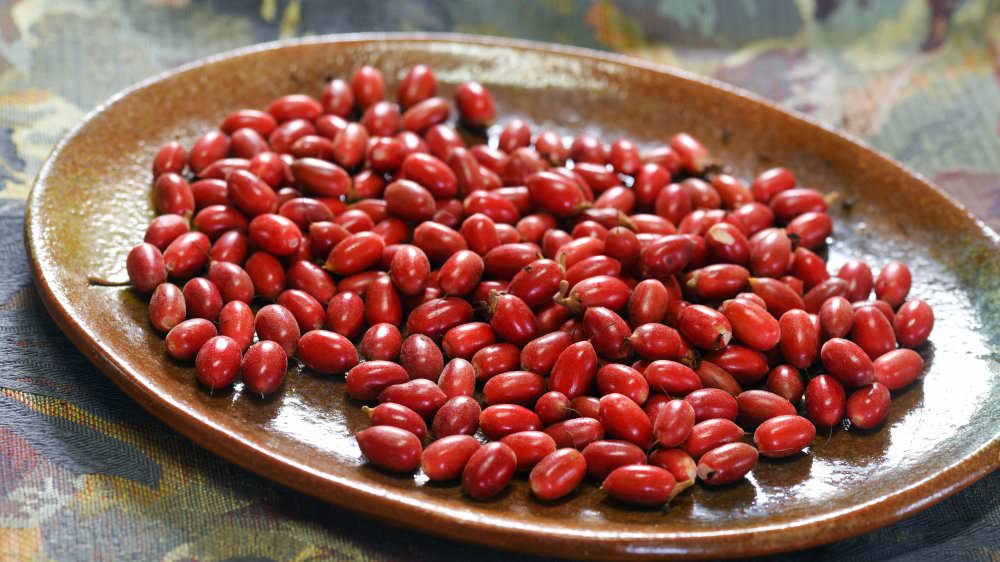
Lemons, vinegar, pickles, rhubarb — they're all tart-tasting foods. Unless you take a "taste trip" before eating them. To taste-trip, you consume a fruit called a miracle berry or a tablet containing the substance miraculin before eating sour or bitter foods.
The miracle berry's miracleulin attaches itself to the sour and bitter taste receptors on your tongue, blocking them and turning tart foods sweet, all without adding extra sugar. Miraculin was initially being explored by a company called Merlin as an ingredient for low-sugar and no-sugar foods, but the aspartame lobby got the FDA to label it as a food additive instead of food, meaning it had to be thoroughly tested. Nowadays, you can buy miraculin online to try taste tripping yourself, and you might eventually find it as an ingredient used to make sweet-tasting foods that don't contain sugar.
#72 Stinky tofu
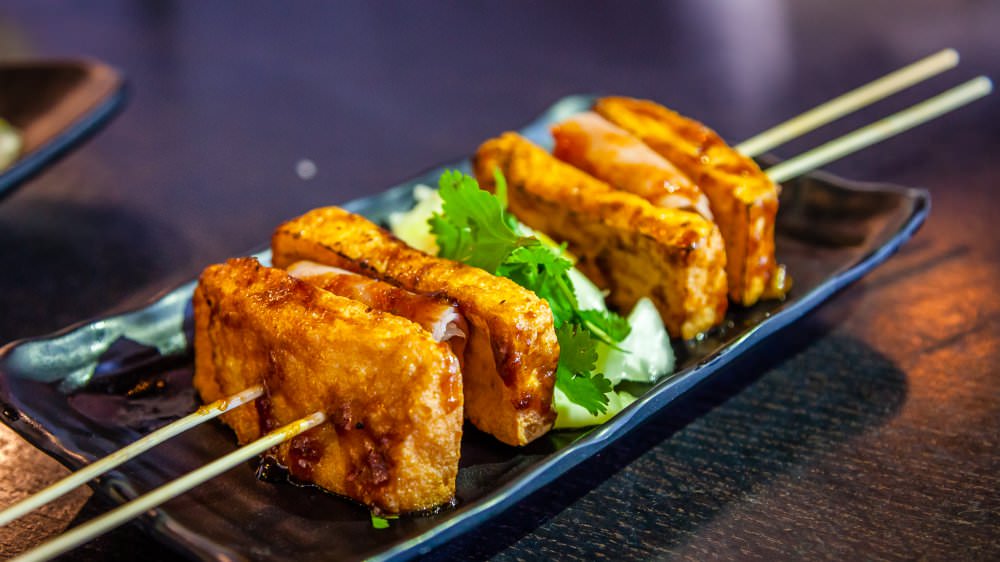
Tofu has been enjoyed in China for 2,000 years, and it was introduced to Japan in the 8th century, but sometimes people in the West still dislike it, which some belief has to do with mass-produced tofu's mild flavor.
It may smell like spoiled cheese and rotting garbage, but once you get past the smell, you'll love the flavor of stinky tofu. It is usually fermented for several days to up to several months in a brine made from fermented milk, vegetables, meat, fish, or a combination of the above.
#73 Natto
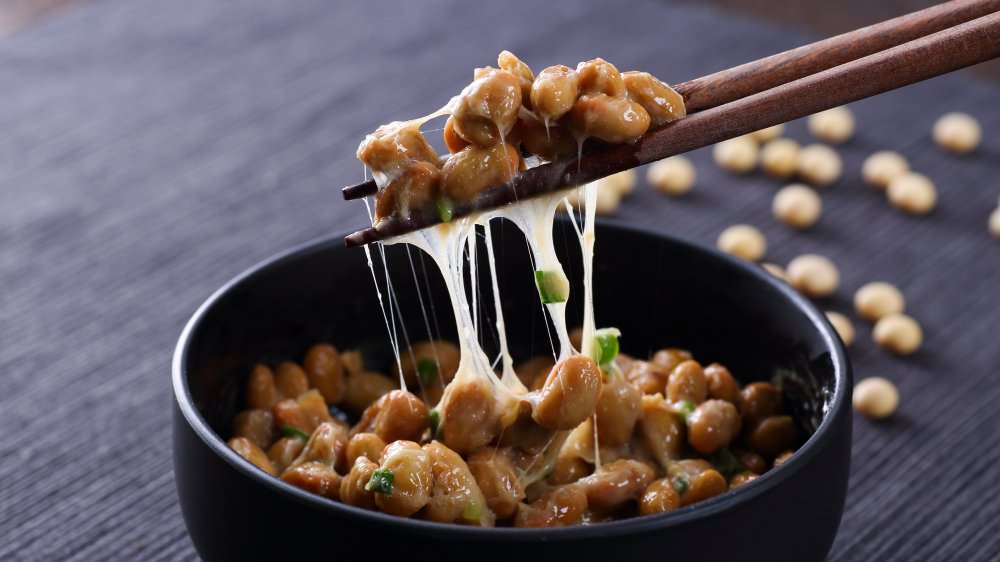
Japanese foods such as sushi, ramen, and teriyaki are ubiquitous in the U.S. these days, but the country has a variety of unique dishes that food lovers should explore.
Natto is a traditional Japanese food that's fermented soybeans due to its high protein, fiber, and Vitamin K content. Natto has a distinctive smell, like many fermented foods. You may be surprised by the texture, which is sticky, stringy, and slimy. When trying natto for the first time, mix it with Japanese mustard and a seasoning sauce of some kind.
#74 Scrapple
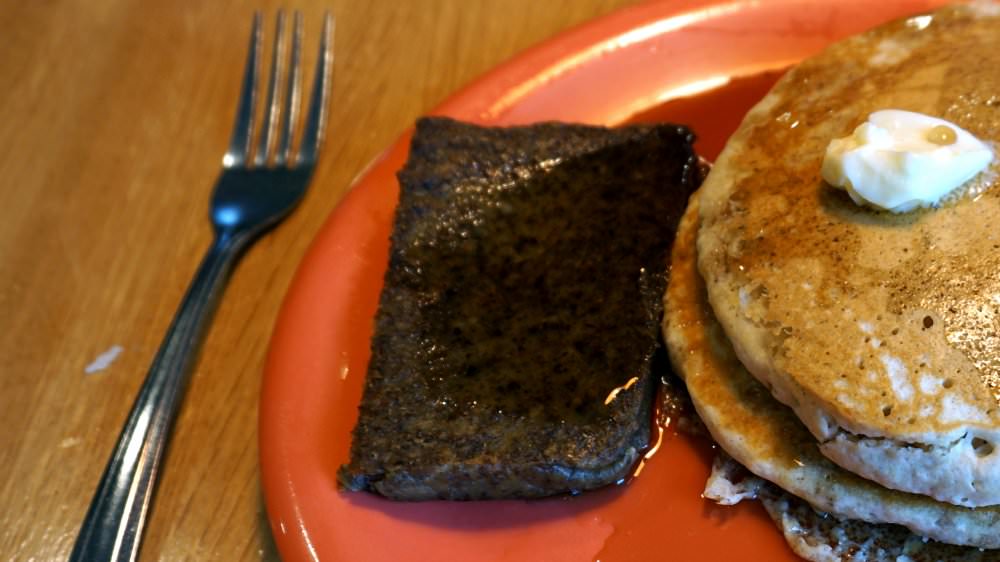
The delicacy is usually served in diner-type establishments throughout the Mid-Atlantic (Pennsylvania, Delaware, and Maryland) but can also be found under other names (goetta, livermush). It is made from broth from butchering and cooking a whole hog. The broth and offal are combined with buckwheat, cornmeal, and spices simmered until thick and chilled until it thickens into a sliceable loaf. The scrapple is then sliced and fried, so it has a crunchy exterior and a mushy, soft interior. It is served with eggs and condiments like ketchup, jelly, and applesauce.
#75 Chaudin

While Louisiana is known for gumbo and jambalaya, if you haven't tried the Cajun classic chaudin, you're missing out on the part of their culinary tradition. Chaudin, also called smoked ponce, originated in French Acadian cuisine. Pork, herbs, and spices are stuffed into pig stomachs. It is then smoked, though both smoked and unsmoked meat can be roasted or braised before serving. Serve it over rice for a taste of Cajun cuisine.
#76 Turducken
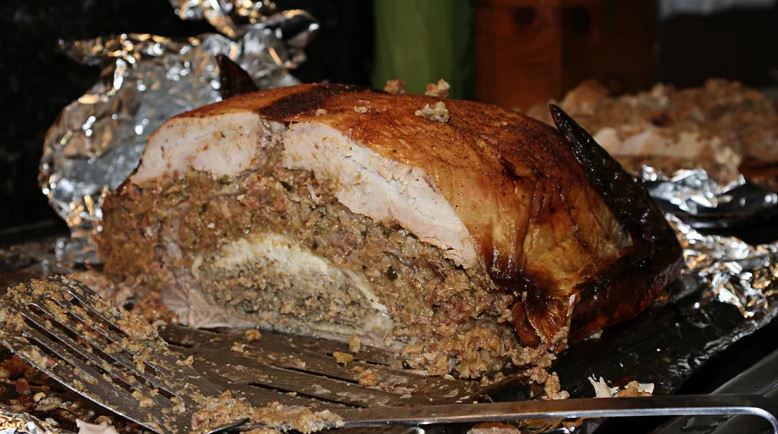
Eating meat stuffed with meat is nothing new, but the Turducken, that indulgent Thanksgiving treat, has only been around since the 1970s. In a long tradition of engastration, or cooking one animal inside of another, the Turducken combines a partially deboned turkey with a deboned duck that is itself stuffed with a deboned chicken, which is stuffed with...stuffing.
Though Paul Prudhomme claimed to be the Turducken's inventor and even trademarked the name, some theorize that it was actually invented in a hunting camp, and there's even a surgeon who claims to be the true inventor.
#77 Chitlins
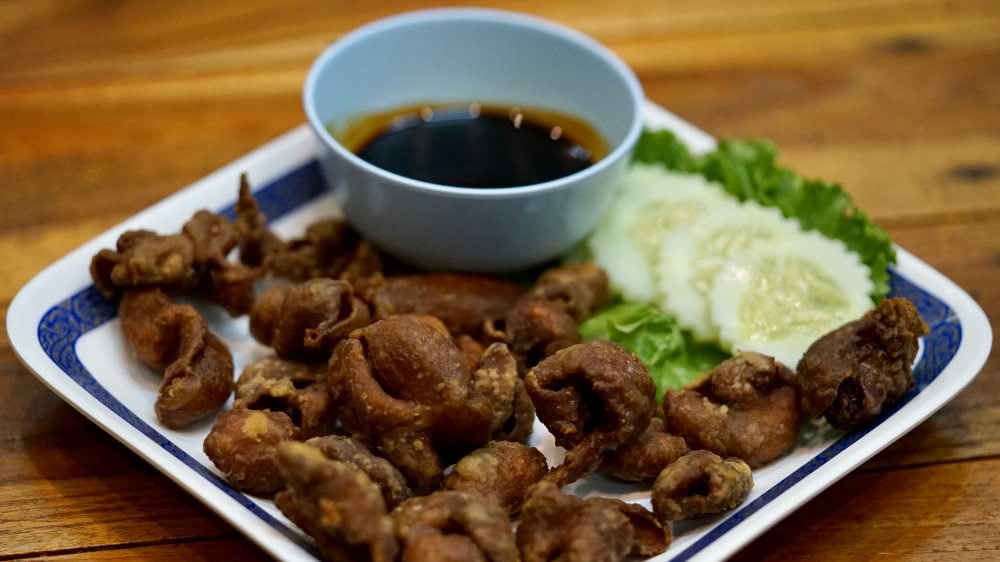
Isn't it obvious that a food with a cute name like chitlins is good? Chitlins, also known as chitterlings, are coveted by some, but you have to get past the fact that what you're eating is pig intestine to enjoy them. Chitlins are a labor of love in the American south. To prepare the intestines, they must be cleaned (otherwise they will smell), then boiled until tender. They're usually fried after and served with vinegar and hot sauce to help cut any unique offal flavors.
#78 Poutine
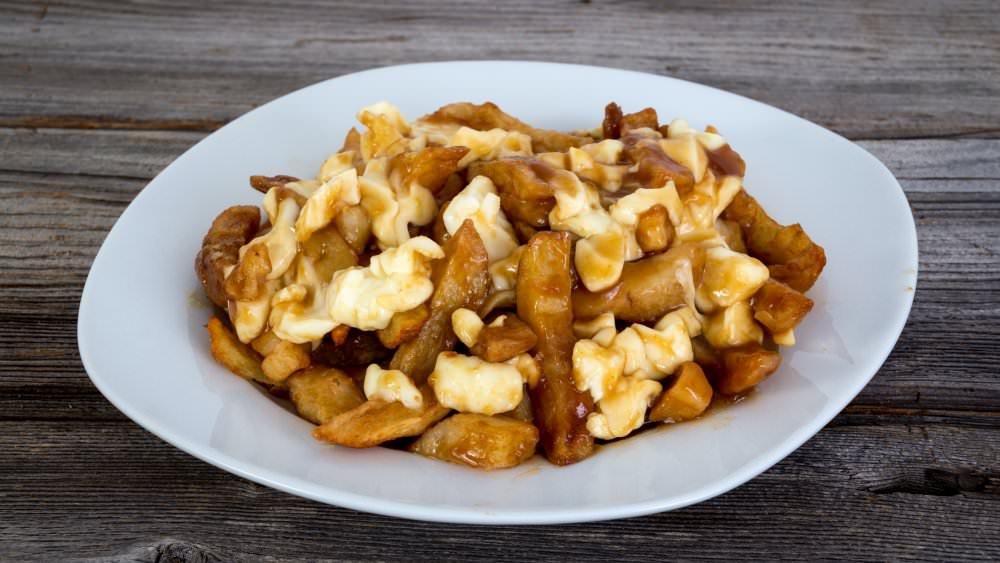
The fries should be crispy, gravy is served with the meat, and cheese curds are made into cheese. Poutine, a classic French-Canadian dish with french fries covered in fresh cheese curds and hot gravy, turns all of these food certainties on their head. The fries soak up the gravy while the gravy melts the cheese curds, creating a dish of salty, savory, starchy goodness.
Although it sounds strange, it's one of the best bar snacks in the world. Poutine was allegedly invented in New Jersey in the 1950s at the same time as "Disco Fries," french fries with mozzarella cheese and gravy.
#79 Kool-Aid pickles
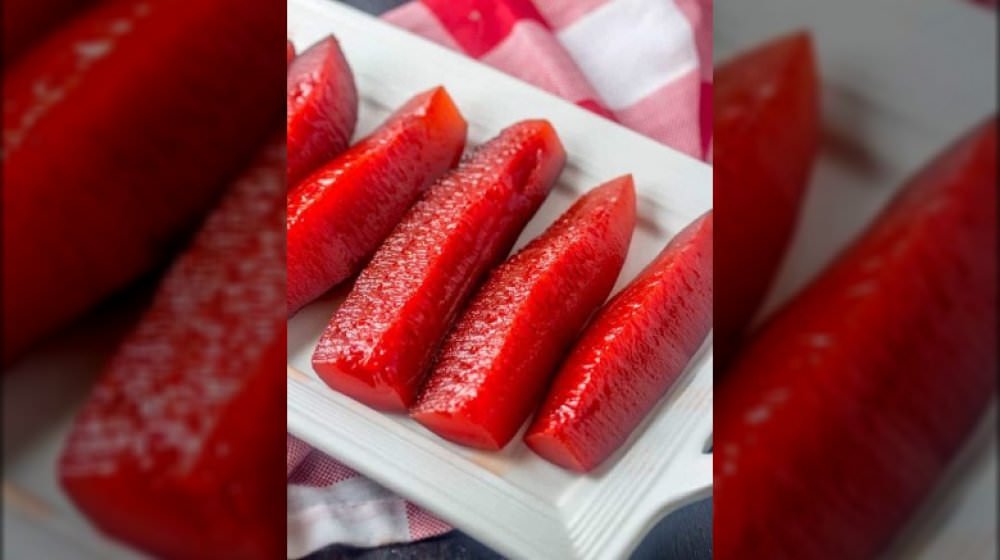
Salty, tangy pickles are usually a greenish-yellow color, but they are often dyed bright purple, red, or blue in the Mississippi Delta region. This is because these pickles have been placed in a container of sweet Kool-Aid for a week after being removed from their first brine of vinegar and salt.
Those brightly colored pickles take on some sweet flavor, but not so sweet that the vinegar and salt completely disappear. Instead, you get a crunchy snack that combines all three tastes simultaneously. As strange as it sounds, think of it as a modern version of the bread-and-butter pickle, with a little extra color added for fun.
#80 Jigg’s dinner and blueberry duff
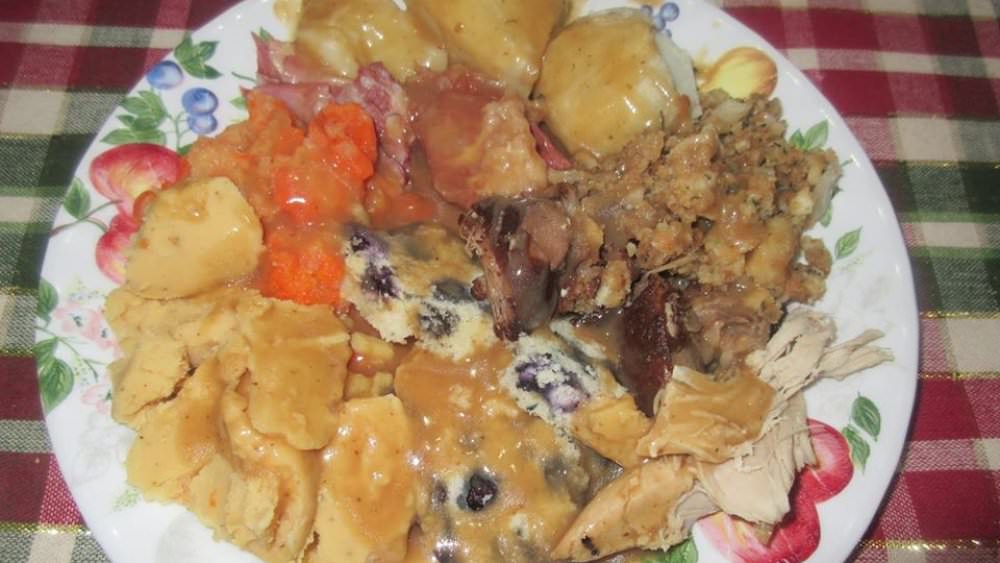
You may have never heard of Jigg's dinner or blueberry duff if you don't live in Newfoundland, but both are delicious. Jigg's dinner consists of salted beef and vegetables like potatoes, turnips, cabbage, and carrots.
The blueberry duff is a type of boiled pudding. It's a blueberry cake, but the batter is poured into a bag and dropped into Jigg's simmering pot to cook. Dinner and dessert are served in the same pot. The blueberry duff gets a little salty, but that's part of its charm.
#81 Burgoo
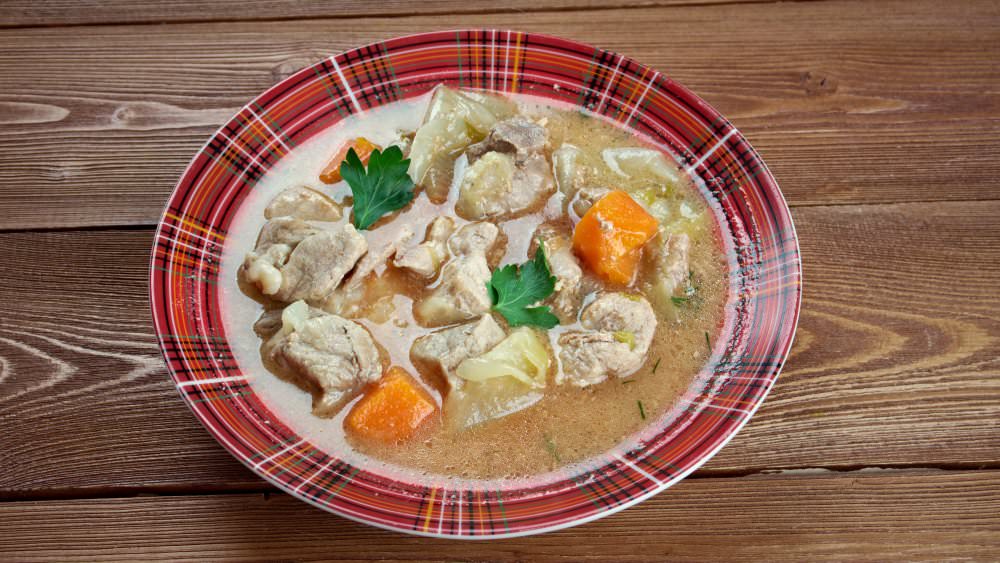
Burgo is a soupy stew made of meat and vegetables, but the meat type in burgoo is a bit unusual. Almost any meat can be used to make burgoo. This dish is made with roadkill and wild game from the forests of Kentucky, such as squirrel, rabbit, possum, pheasant, and venison. In today's world, it's more likely to be made with chicken or pork, but as long as yours has a mix of meats, some kind of tomato, beans, corn, and potatoes, it's legit.
#82 Rattlesnake
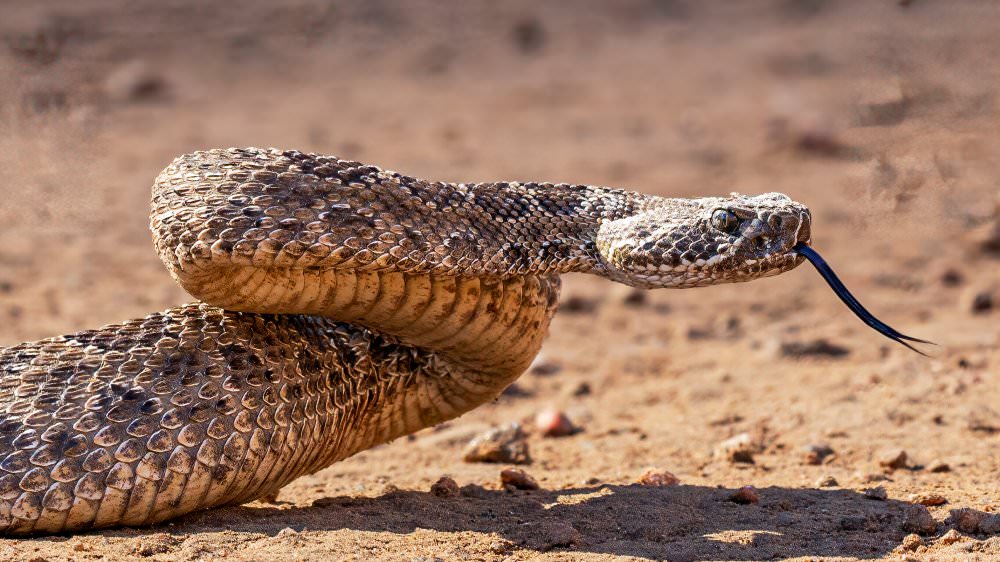
The rattlesnake may seem more like a predator than a food source, but in the Southwest, it is known for its light flavor, which some liken to chicken or white fish. It can be fried or incorporated into a chili or stew.
Prepare rattlesnake carefully if you aren't eating it at a restaurant. The head can still bite you despite decapitating the snake, so take care. Rattlesnake has little meat and not much flavor, but you can say you've eaten one!
#83 Salo

While bacon fat or lard are not uncommon for cooking, in Ukraine, pork fat is served as a dish in its own right. Salo is a cold pork fat served with tangy accompaniments like garlic, onion, and pickles, often with a slice of Bread and a shot of vodka. Salo is usually cured with salt or fermented in salty brine. It can also be smoked. The salo is made from the fat on the back of the pig. The caloric part of the animal was a source of nutrition for those who braved Ukraine's harsh winters, but today it's a beloved traditional food rather than a necessity.
#84 Lamprey

Lampreys might seem like an odd choice for a meal, but they've been popular since the Middle Ages. They resemble eels but have a jawless gaping mouth of teeth where the face should be instead of a jaw. Lampreys have barely evolved in the past few million years.
Lampreys are said to have a meaty texture, almost like slow-cooked beef, and unlike many of their oceanic counterparts, they are not fishy tasting. In ancient times, people abstaining from meat during religious fasts would choose lamprey over other seafood because of its meaty texture and flavor.
#85 Shirouo no odorigui
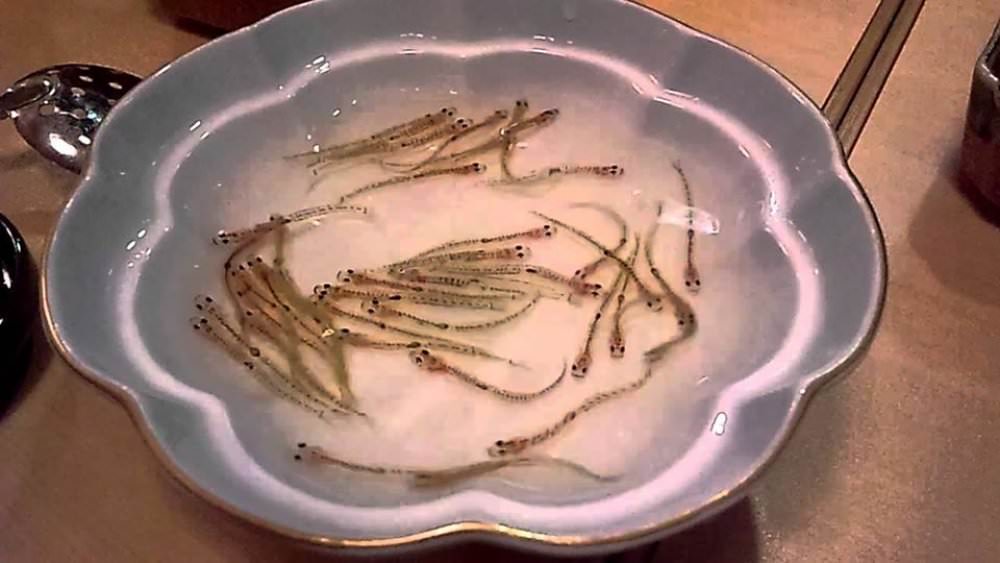
While "ice gobies" sounds cute, in reality, this see-through, tiny minnow fish is quite dark, especially when eaten. The reason why they're dancing is that they're served as Shirou no odorigui or dance-eating fish. In the past, fishermen ate these tiny fish by shooting them back in a shot glass with some soy sauce, and they would wiggle and squirm down their throat as they gobbled them up.
The good news is that these fish are as fresh as possible. They spoil quickly once expired due to their small size, so eating them alive will ensure you're getting the freshest bite possible.
#86 Tête de Veau
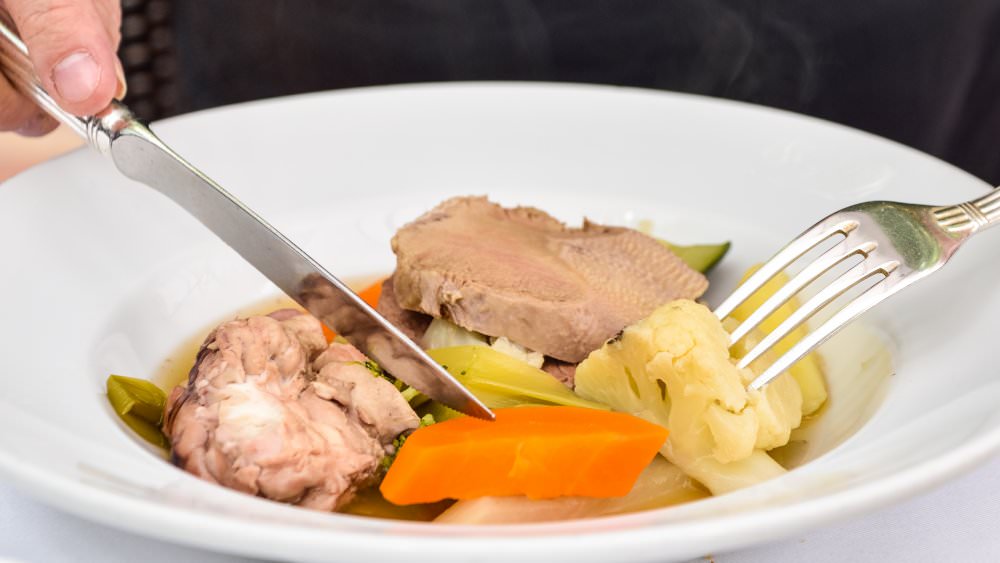
While in the U.S., we tend to consume cuts of meat that are pretty unidentifiable compared to the part of the animal they came from, this isn't the case in other countries. Take tête de veau, or calf's head, a traditional French dish.
While the calf's head is boiled or braised, the tongue and brain are cooked separately until everything is tender and juicy. The three types of meat are usually served together, and the sauce Gribiche, made with hardboiled eggs, goes well with them. There are still restaurants in France that serve tête de veau, or, if you're feeling adventurous, check if your local butcher sells calf heads to make your own.
#87 Huitlacoche
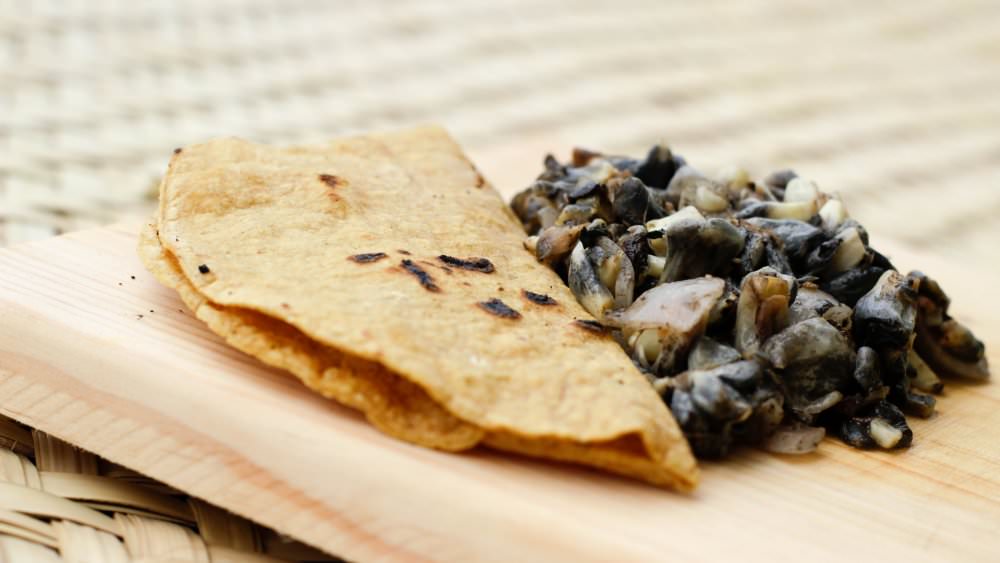
You've eaten fungus before if you've ever eaten a mushroom - shitaake, button, black truffle, etc. But unless you live in Mexico, you've probably never tasted huitlacoche, a corn fungus used by the indigenous people of Central Mexico and the Southwestern United States for centuries. Huitlacoche is also known as corn smut and Mexican truffle. It has an earthy, corn-like flavor, is high in protein, and is easy to cook.
Huitlacoche can be found on the menu of your favorite Mexican restaurant or taqueria, and you might even be able to find it at farmers' markets if you live in the Southwest. You can add it to quesadillas, sauces, stews, and more to give them a unique flavor and color (it turns black when cooked).
#88 Geoduck
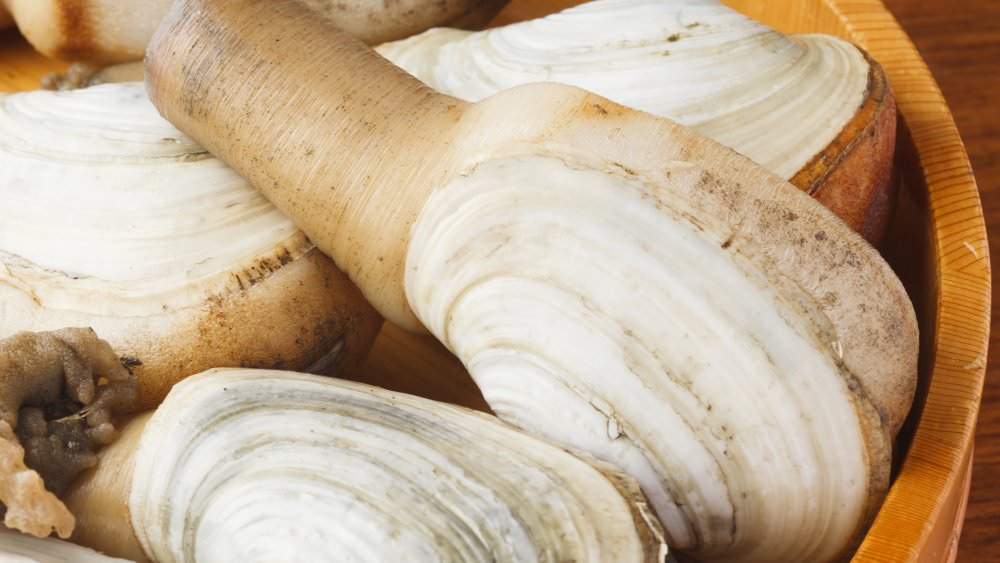
Calling a geoduck phallic is like saying the sky is blue — it's going to elicit a "Duh!" from anyone who has seen it. The geoduck is a type of shellfish native to the Pacific Northwest, and even though their shells contain a lot of meat, their girthy necks tend to get all of the attention.
The meat within the shell is sweet, clear, and fresh, and the neck meat has a bit of crunch. You are most likely to find geoduck on U.S. menus in restaurants on the Northwest coast, but it is also available in Japan, Korea, and China.
#89 Escamoles
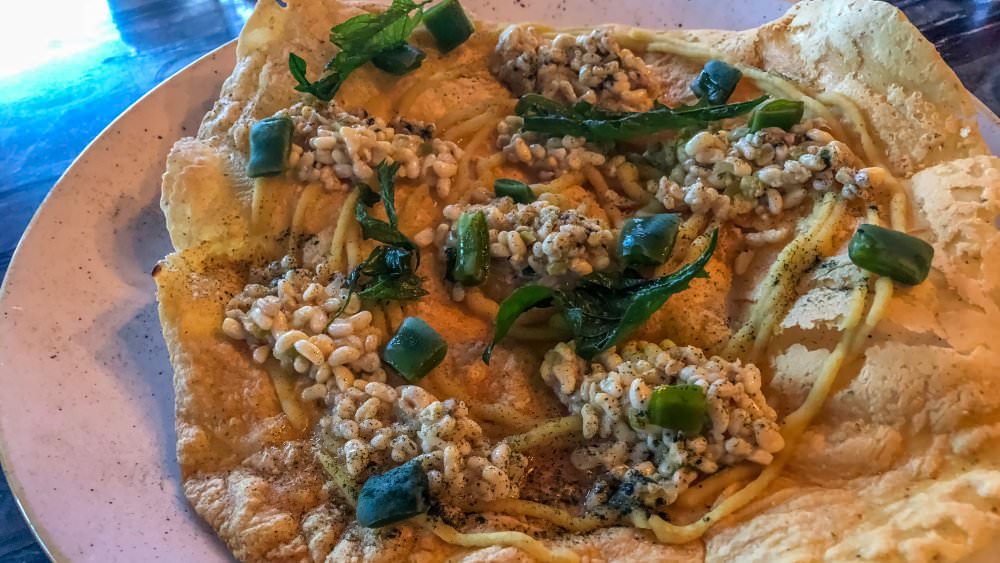
The delicacy of caviar, or fish roe, is well known, but did you know that ant caviar exists? An ant larvae-based treat known as ant caviar, or escamoles, is also called ant caviar. It was once a delicacy among the Aztecs, and today you can still find it on the menus of restaurants throughout Central Mexico, even in Mexico City.
Escamoles are prized for their nutty and buttery taste, as well as their creamy mouthfeel. To try escamoles, you will need to travel to Mexico since ant caviar cannot cross borders. Craving for some tasty ant eggs motivates you to go on vacation.
#90 Fried tarantulas
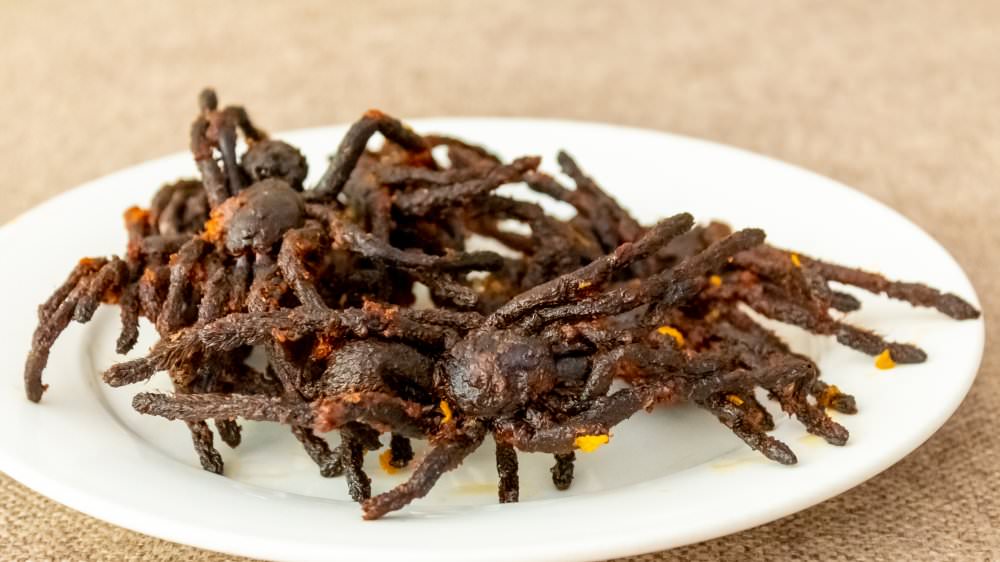
This next one might sound too strange to believe to an arachnophobe, but in Cambodia, fried tarantulas aren't just a popular snack - they are also a food that prevented people from going hungry during the war.
Tarantulas have been eaten in the region for more than 100 years, but when Pol Pot and the Khmer Rouge took over the country in 1975 and threw it into war, people started relying on the spiders as an important source of nutrition during a time of scarcity.
#91 Spoon worms
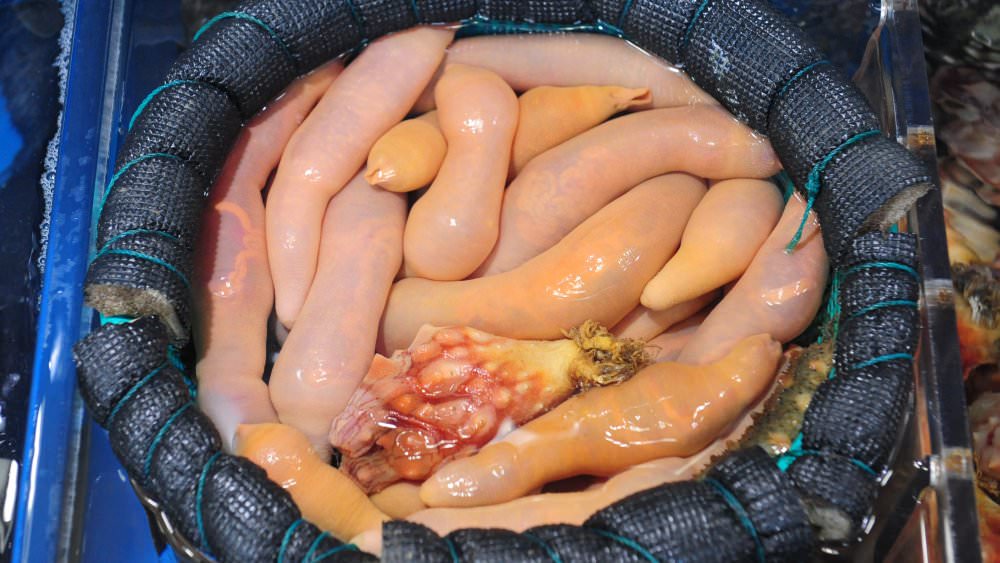
Known as gaebul, or by the very descriptive nickname "penis fish," marine spoon worms are a traditional Korean delicacy. Goebel is said to be an aphrodisiac, like many phallic foods. Most people eat them raw, dipped in a sesame oil and salt mixture, or a spicy vinegar sauce called gochujang.
Cooked gaebul can also be prepared, usually grilled and seasoned lightly with salt, pepper, and sesame oil, but some people say that cooking the gaebul spoils its flavor, which is slightly salty and sweet.
#92 Llama carpaccio
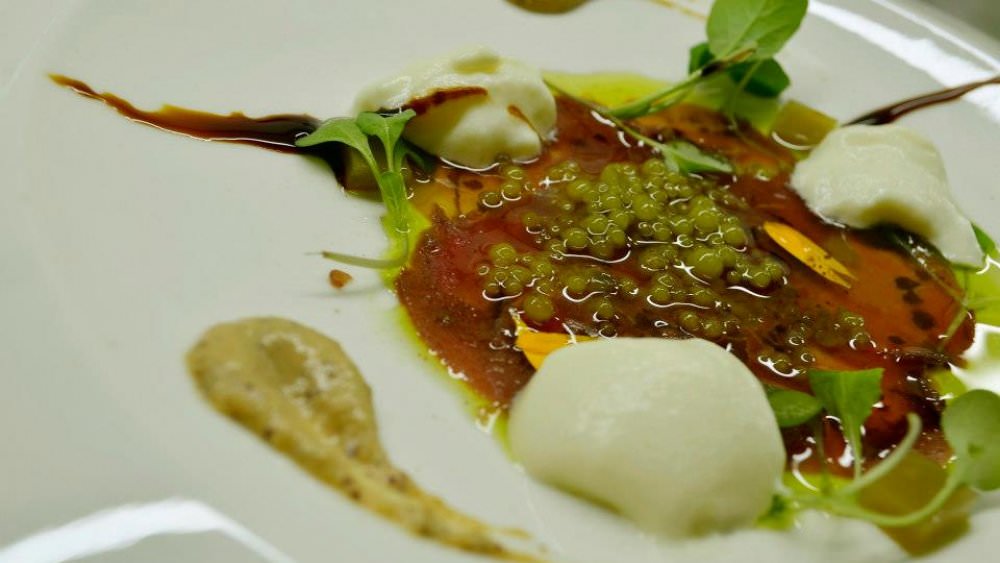
Many upscale French restaurants serve beef carpaccio, a thinly sliced raw beef dish. However, the raw meat on your plate might be llama in La Paz, a city in Bolivia. In the Andes mountains, where llamas were also used as pack animals, llamas have been eaten for centuries.
Today, llama meat has gone from a humble home-cooked meal to an upscale restaurant menu item, with tourists from around the world eager to try this unique meat - and score bonus points for eating it in its purest form, completely uncooked.
#93 Palolo

It is harvested seven days after the full moon in October when the worms are tiny. Families scoop up the worms in nets or with their hands during the dark hours of the night. Palolo worms have a fishy taste, similar to caviar, and can be eaten raw right out of the ocean or cooked with other foods to give them a salty taste.
Strangely enough, the worms that are harvested aren't complete. Palolo worms stick to coral and release their back ends into the water to reproduce. If you eat palolo, you're not just eating worms - you're eating worm butts.
#94 Head cheese
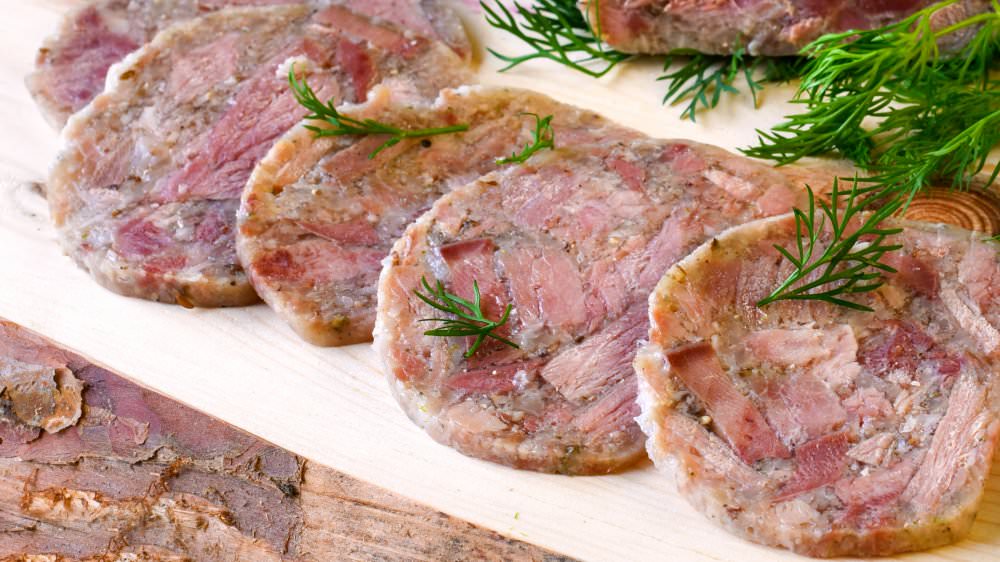
If you've ever heard of head cheese and thought it was some dairy product you've been missing out on, think again. Head cheese isn't cheese at all. The sausage is made by boiling a pig's head with aromatics, pulling off the meat, and stuffing it into sausage casings or a loaf pan. The collagen- and gelatin-rich broth from boiling the meat sets as it cools, leaving you with a sliceable meat product.
There are so many different parts to the pig head that it is full of different textures. Head cheese is usually served sliced with Bread or crackers, butter, pickles, and mustard.



